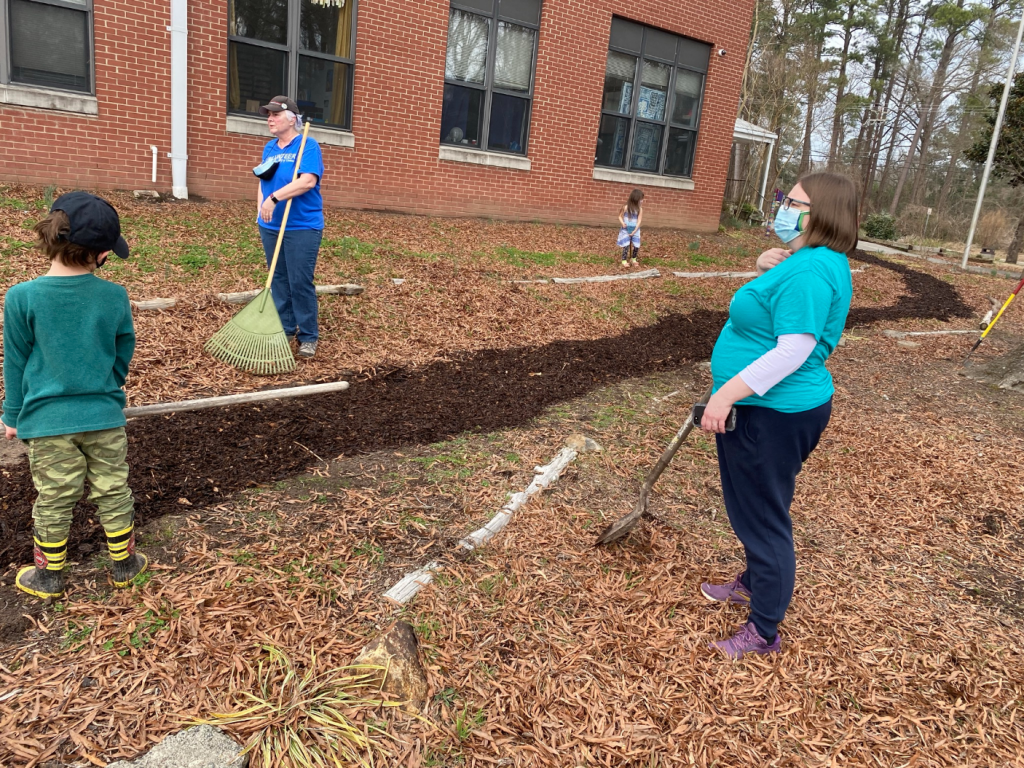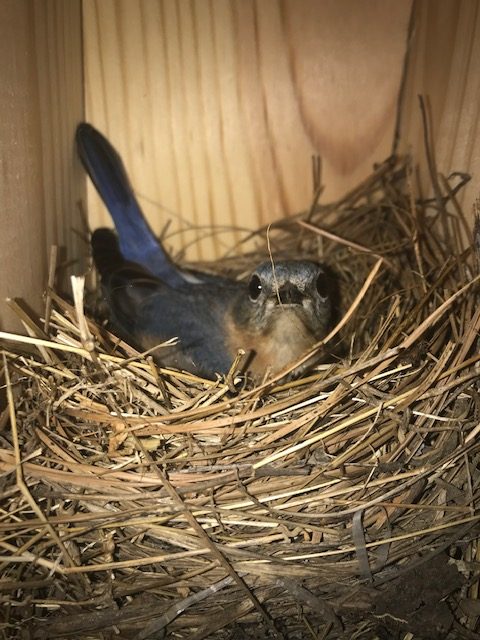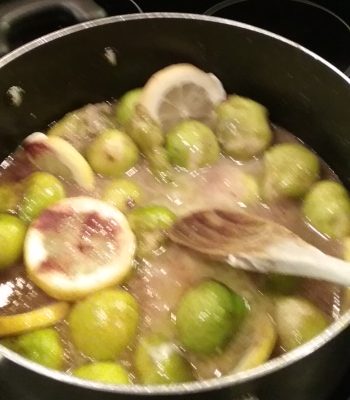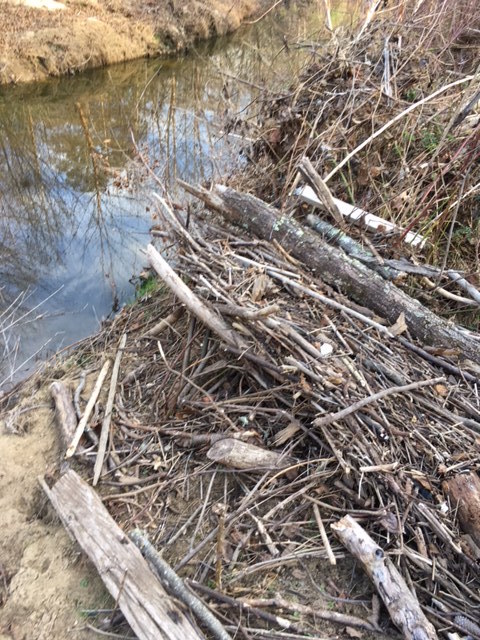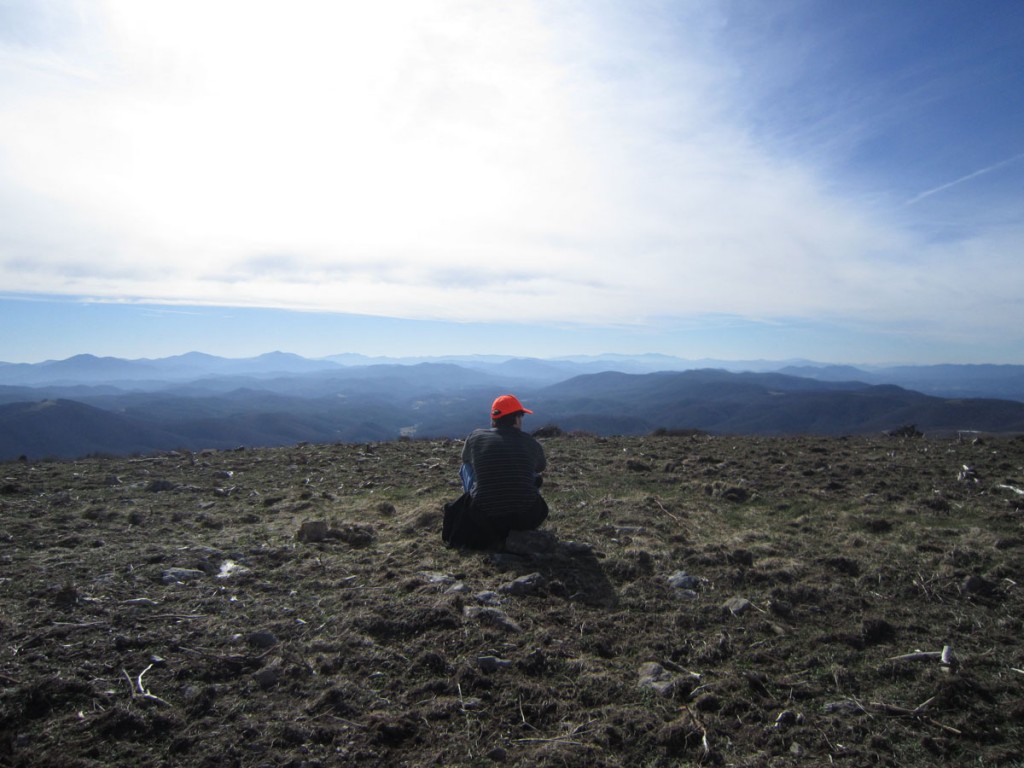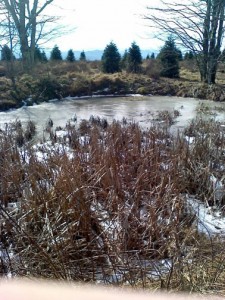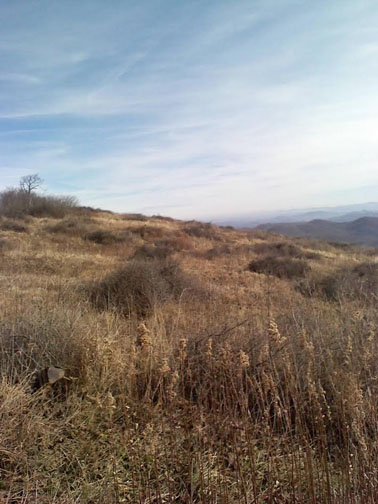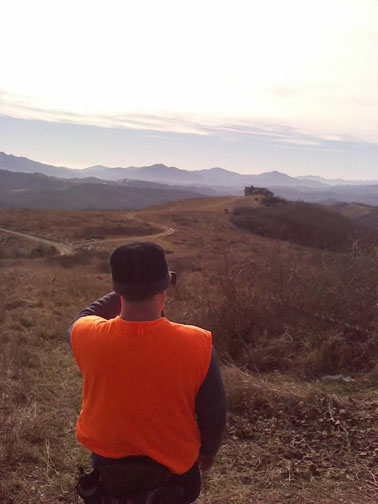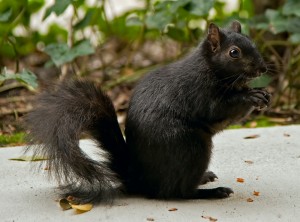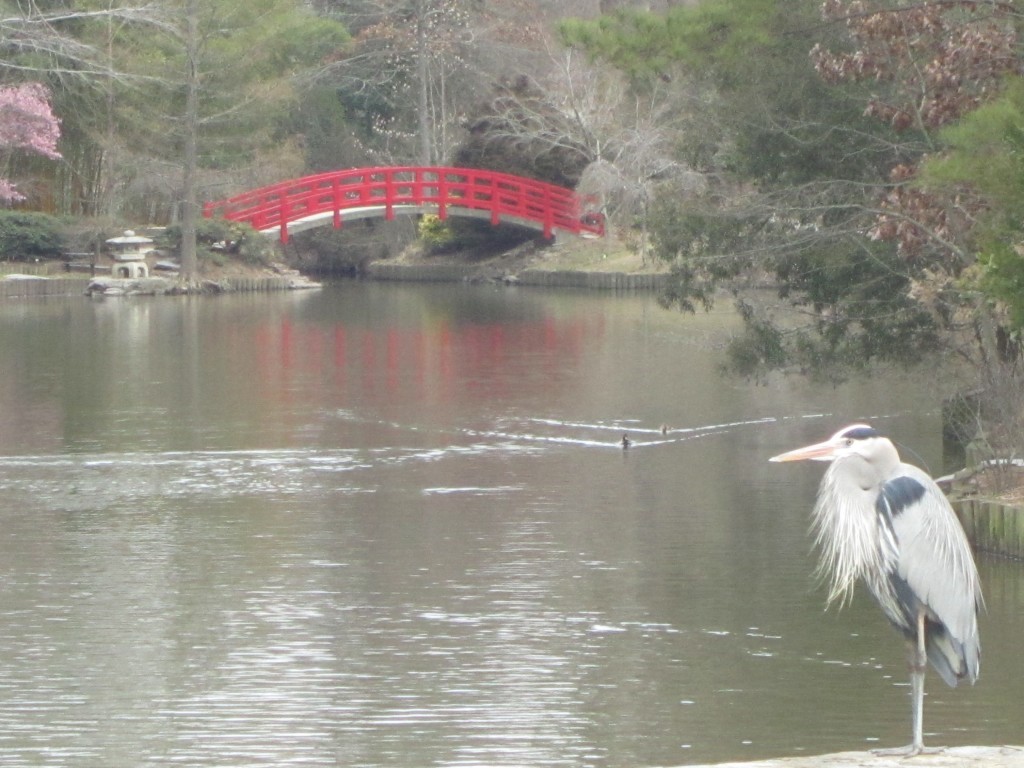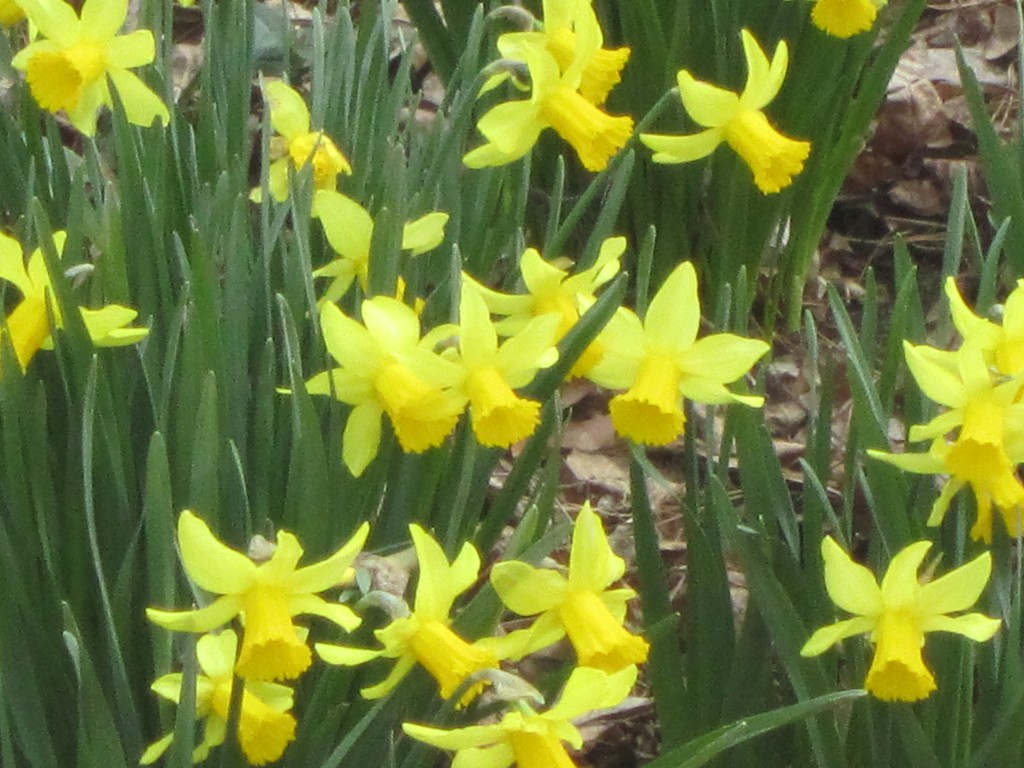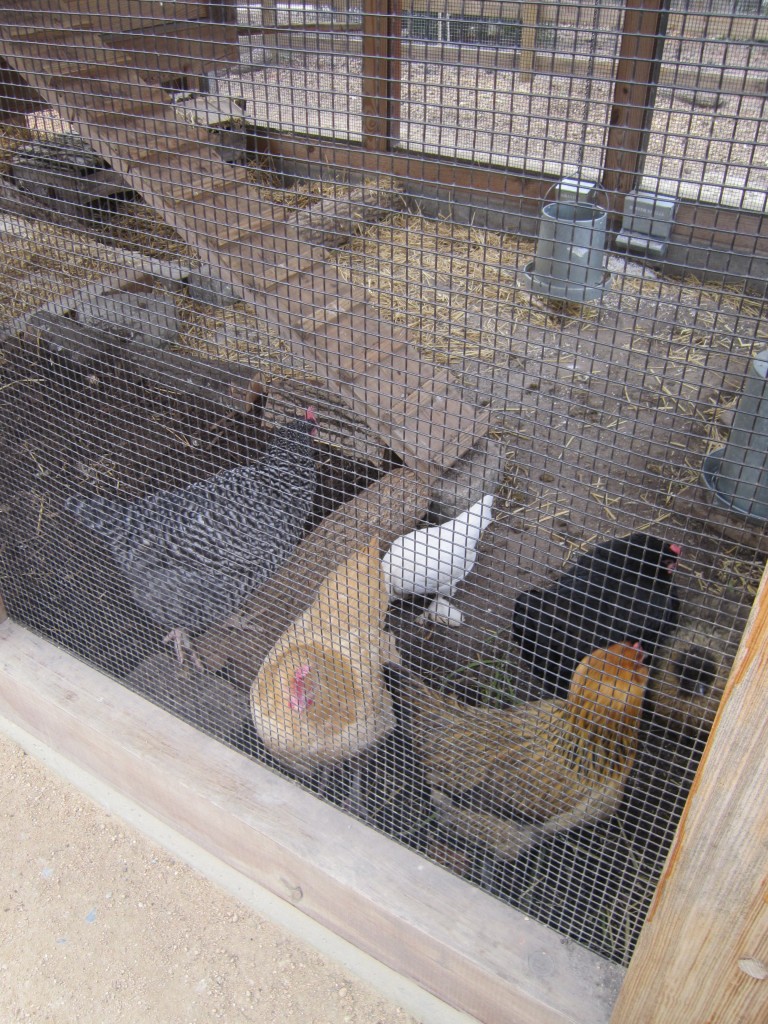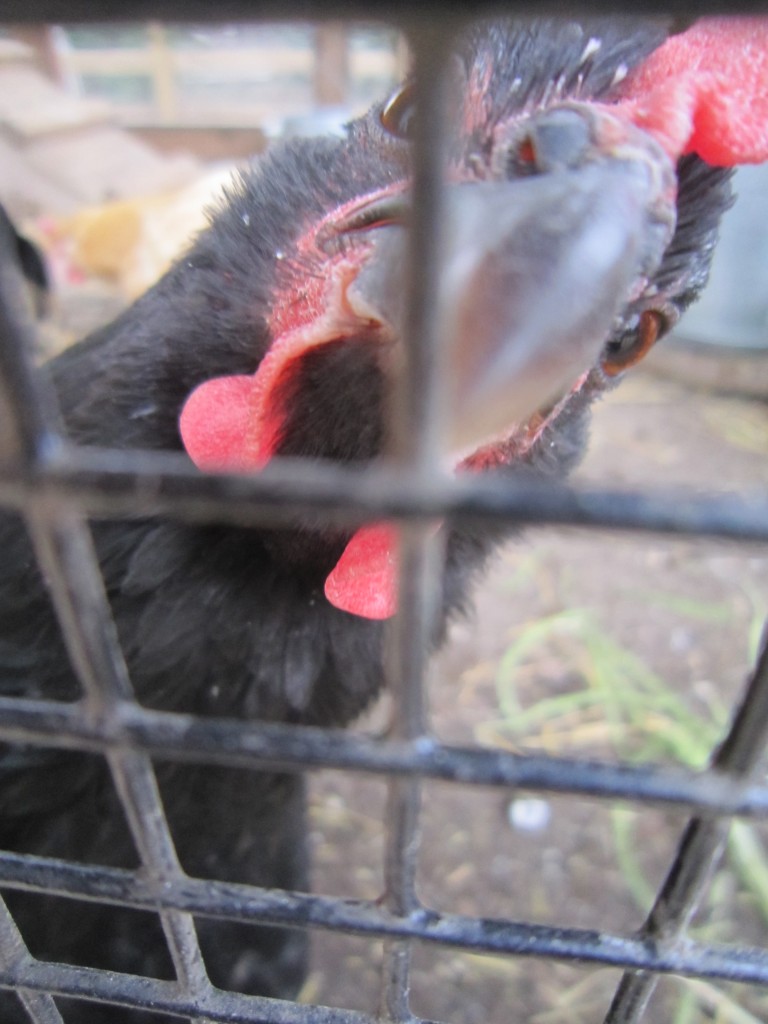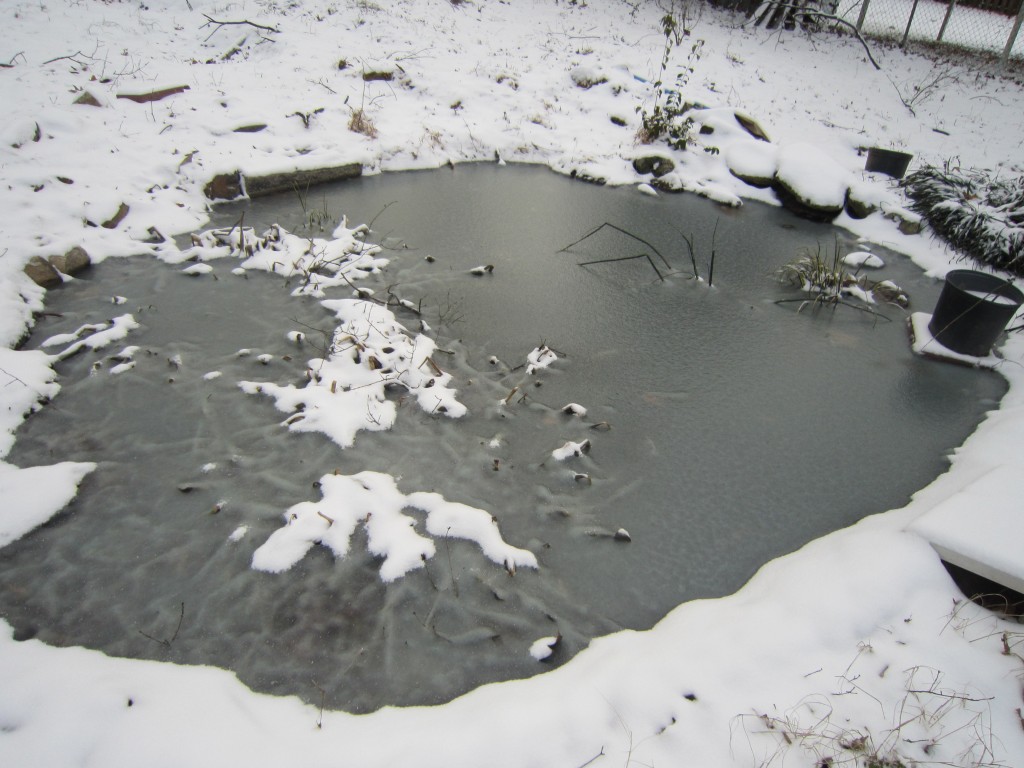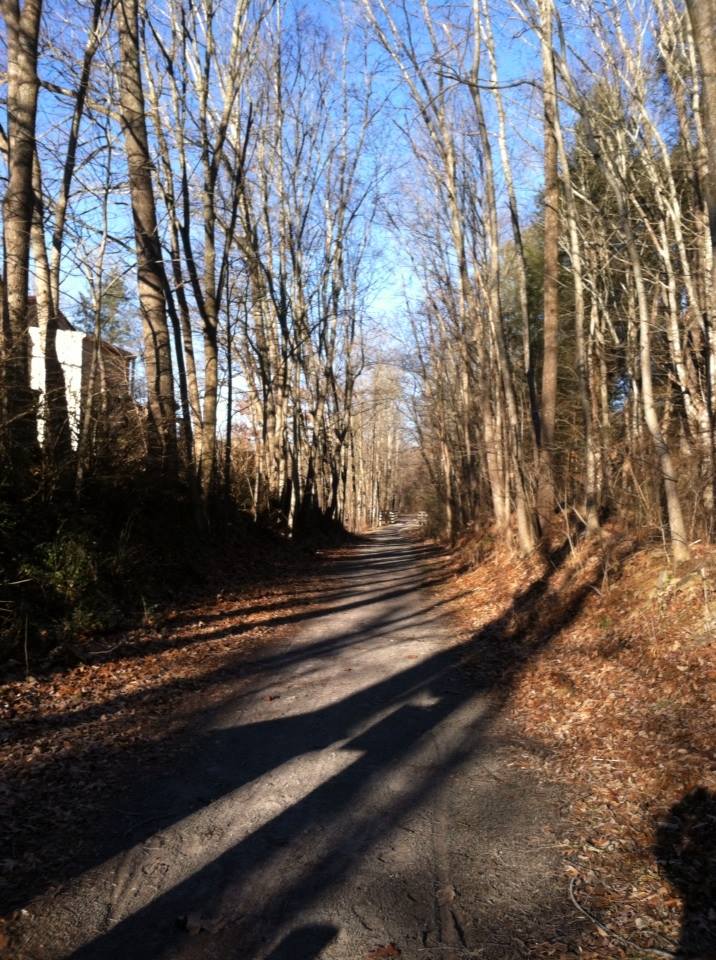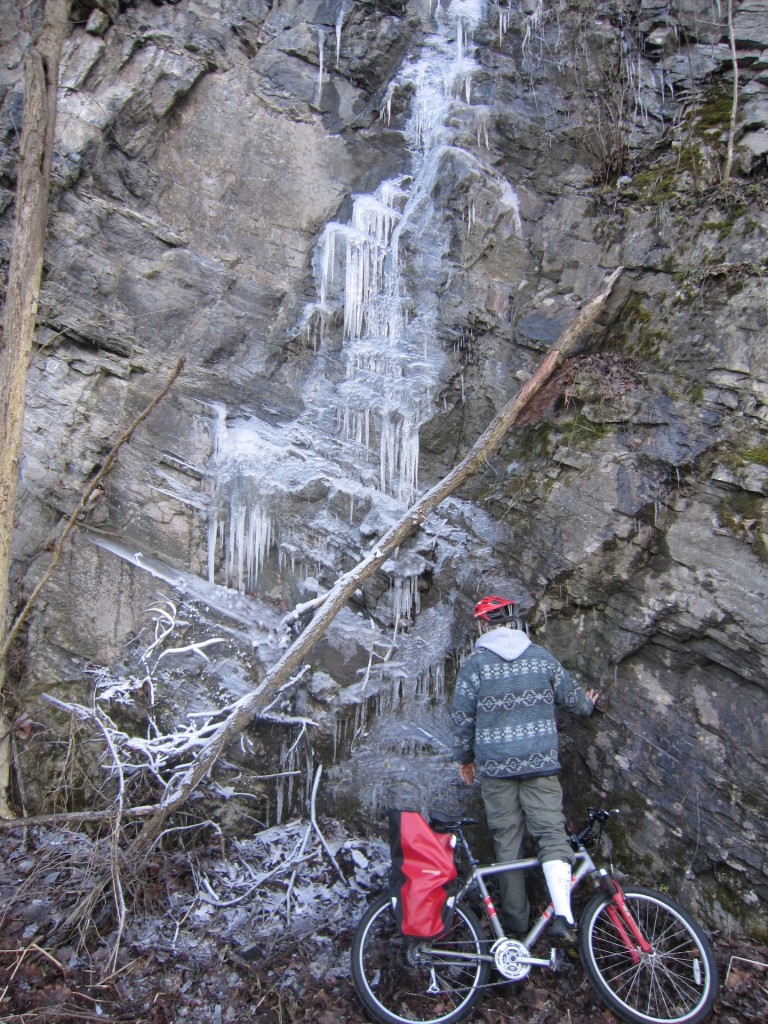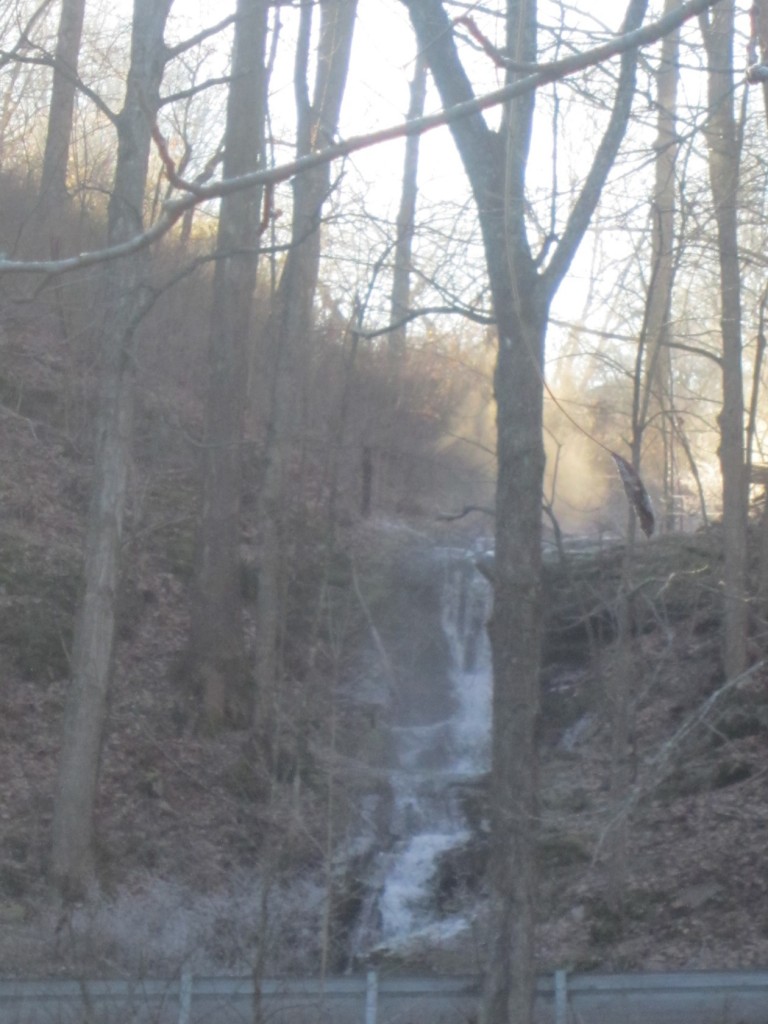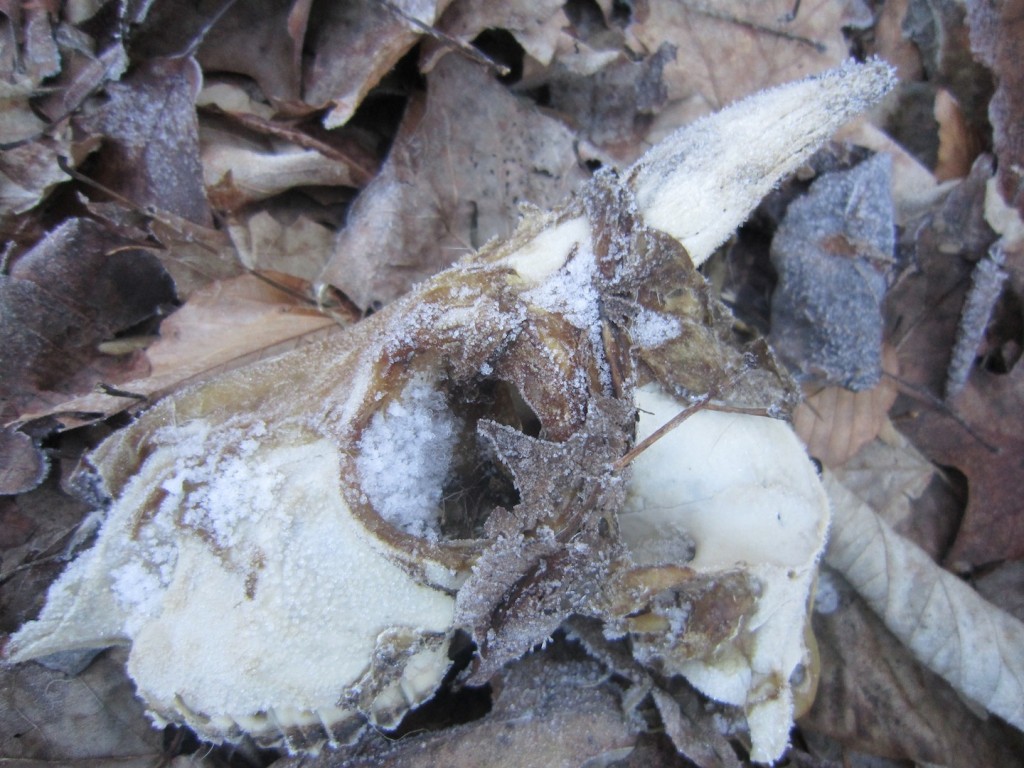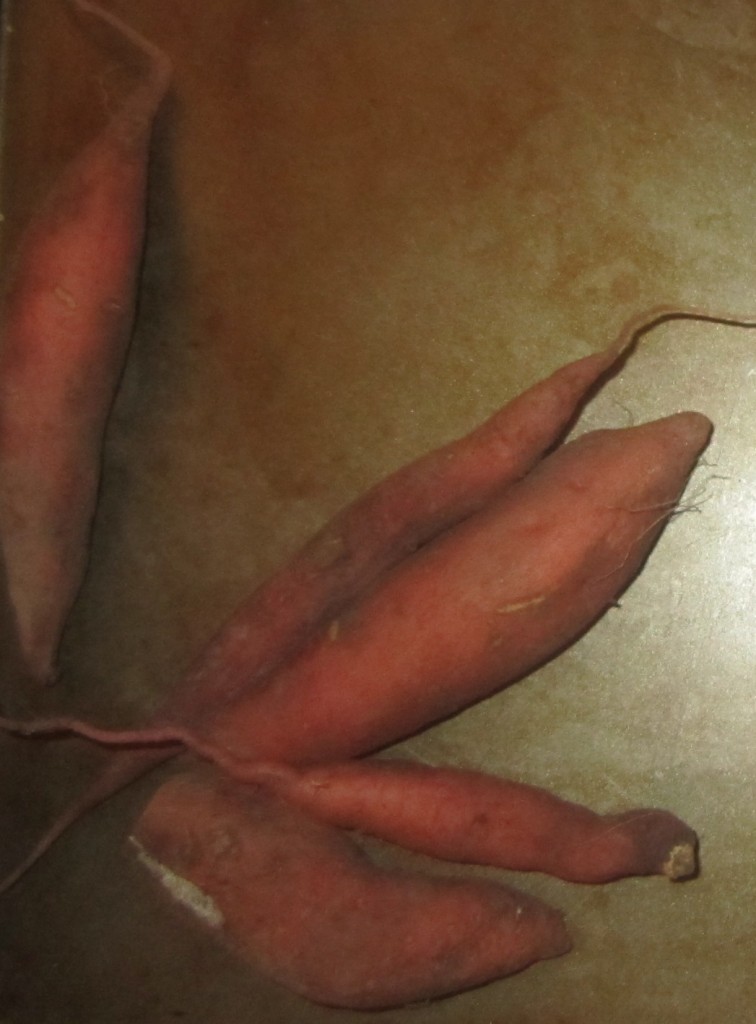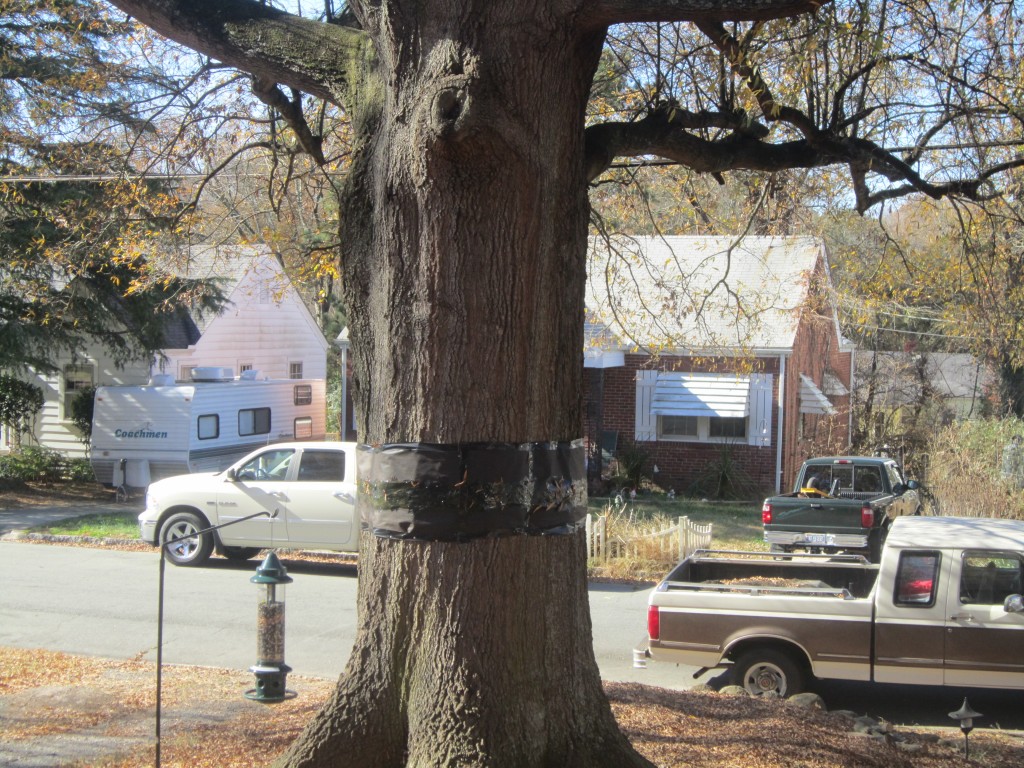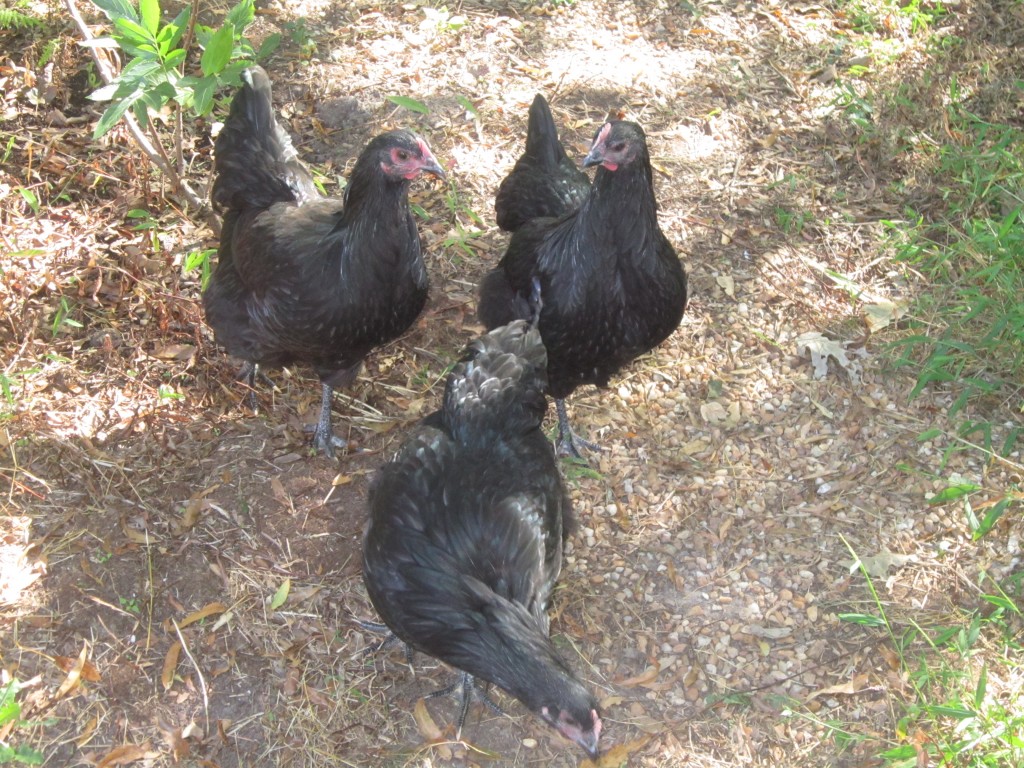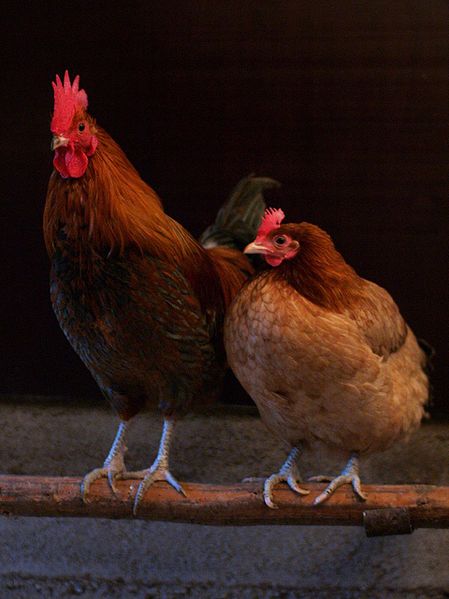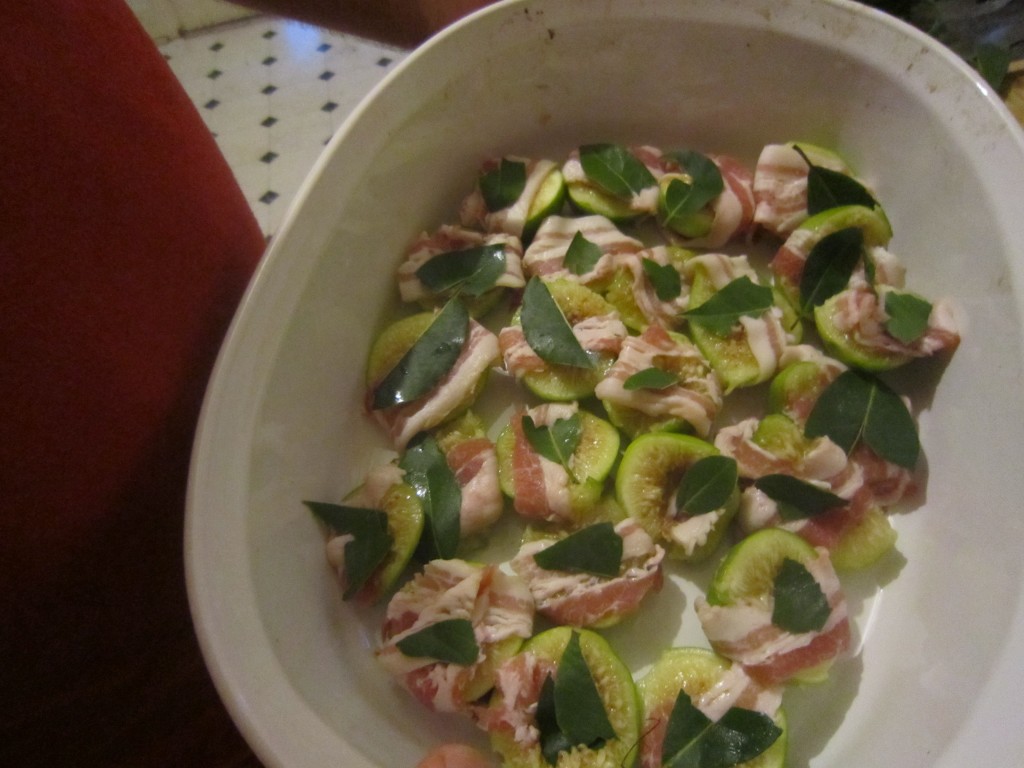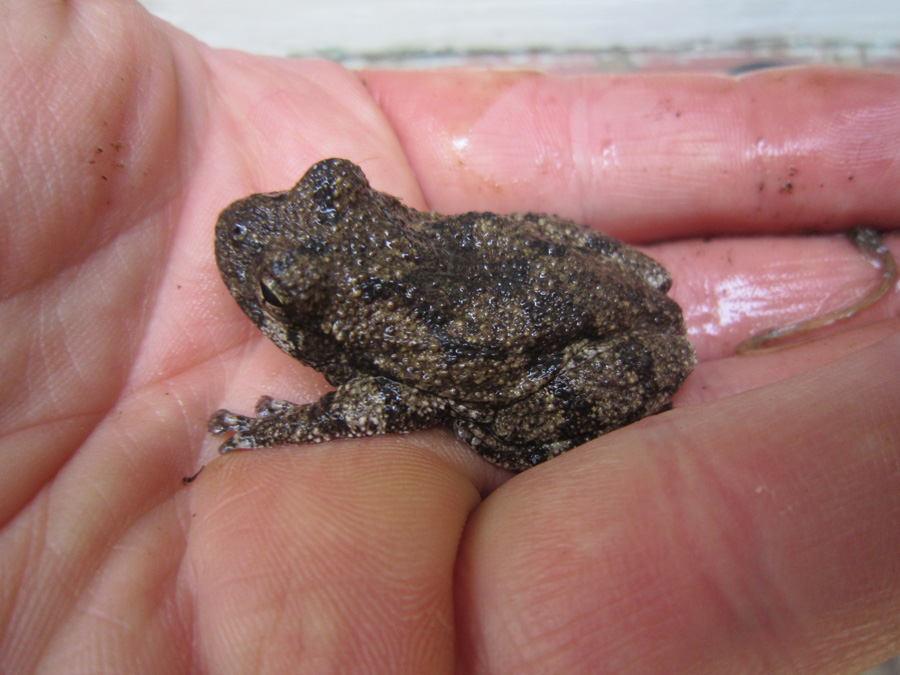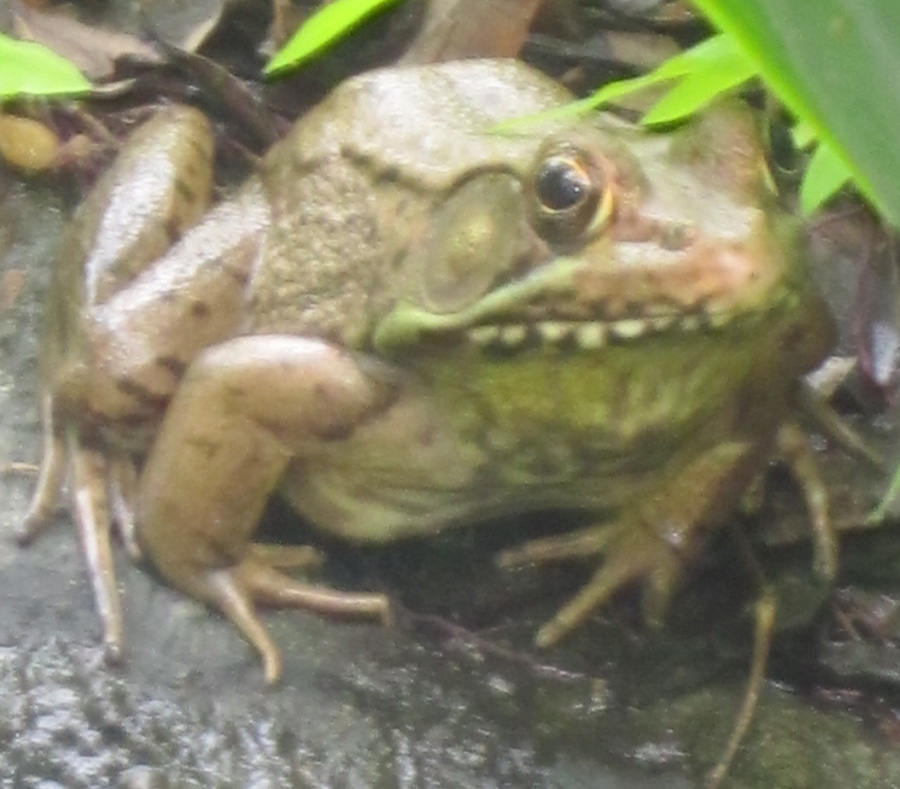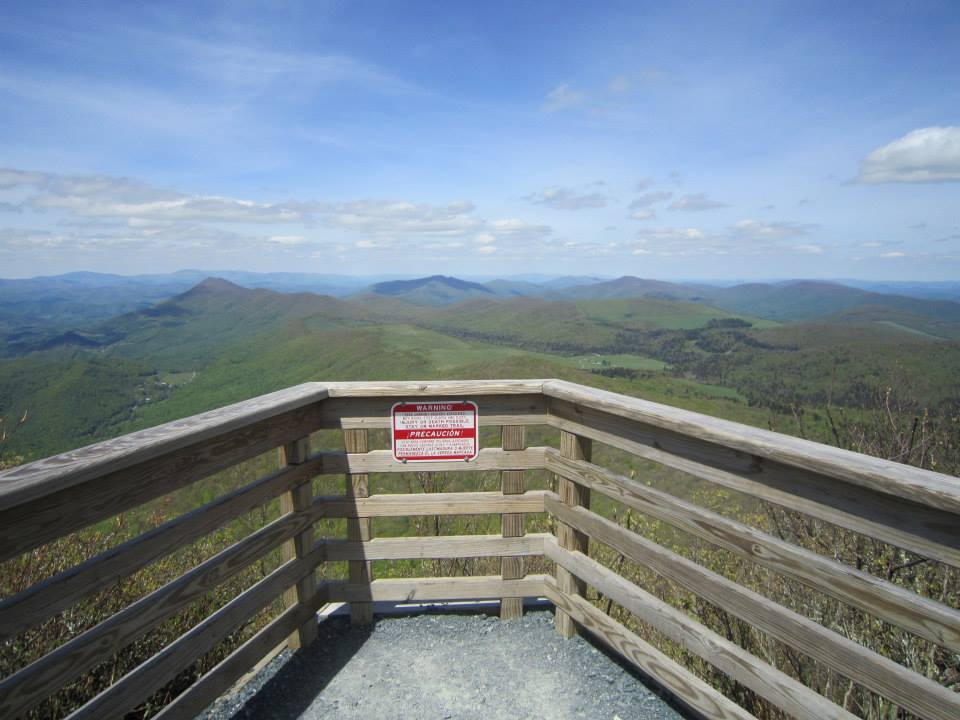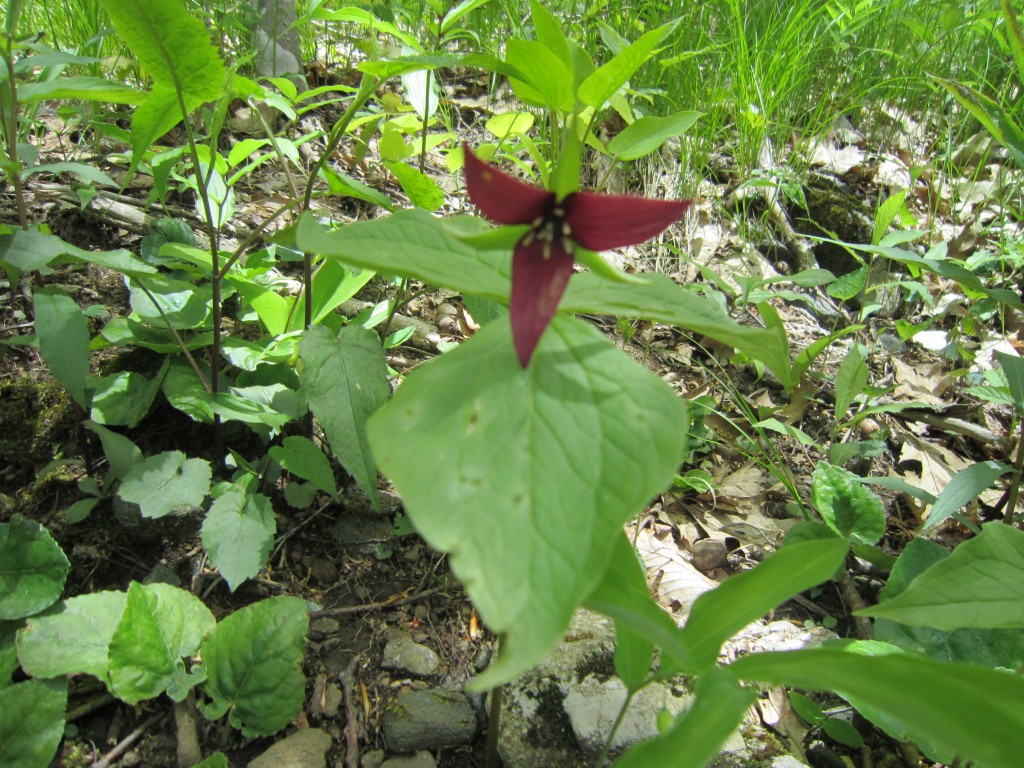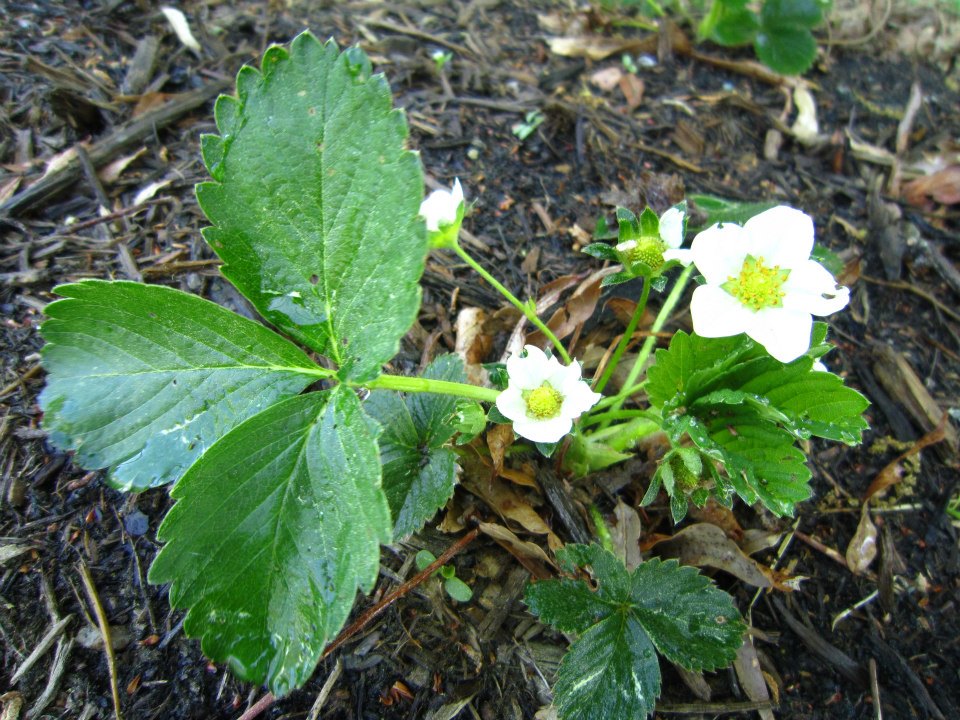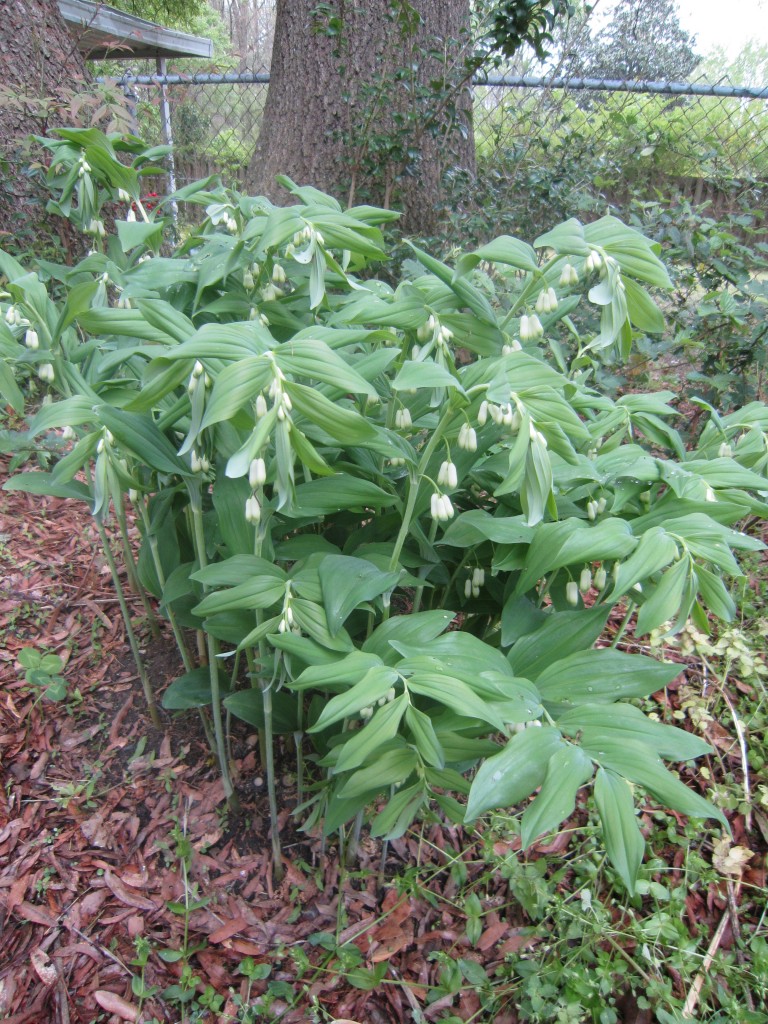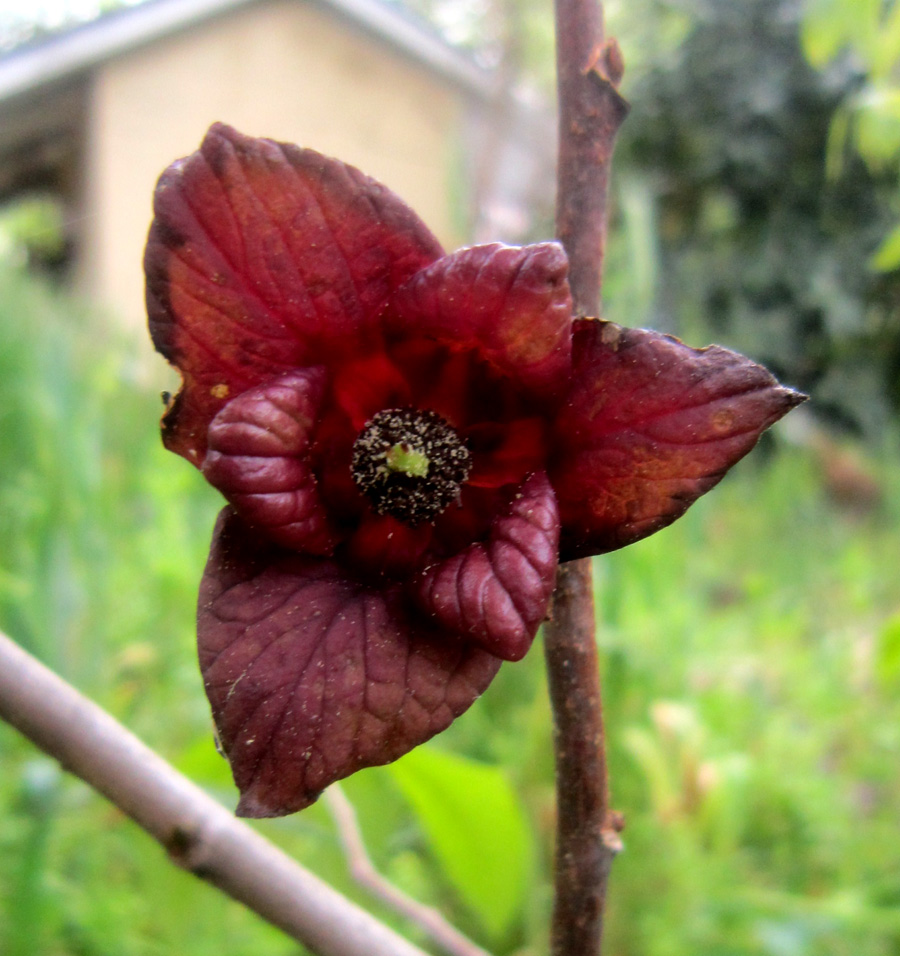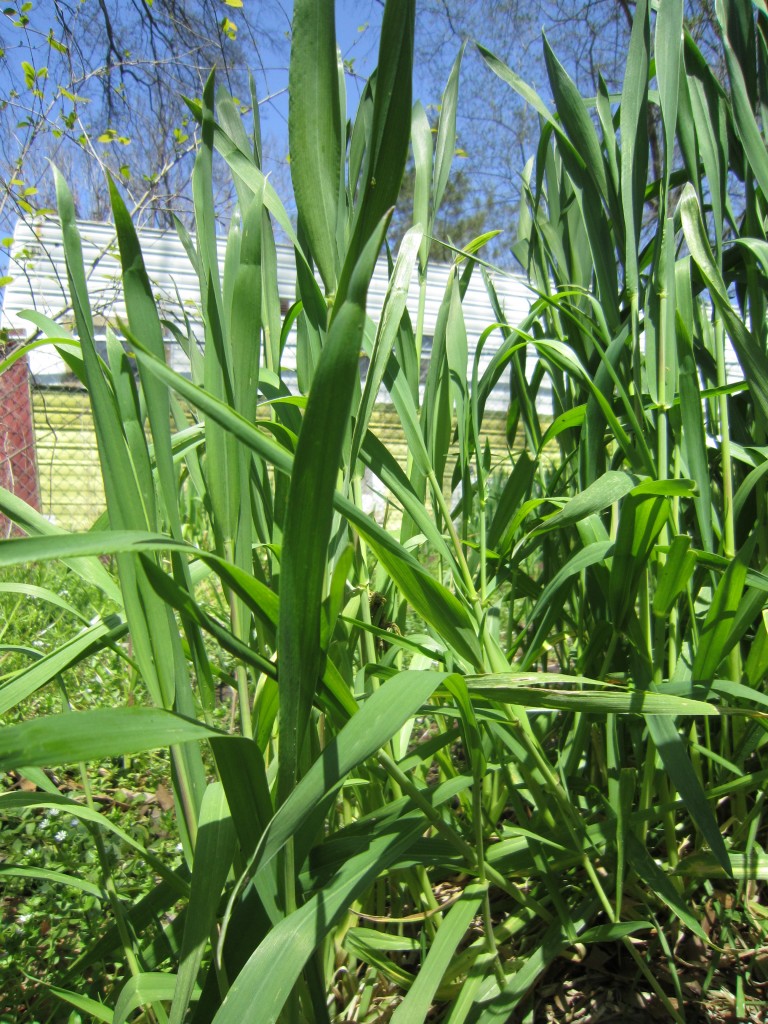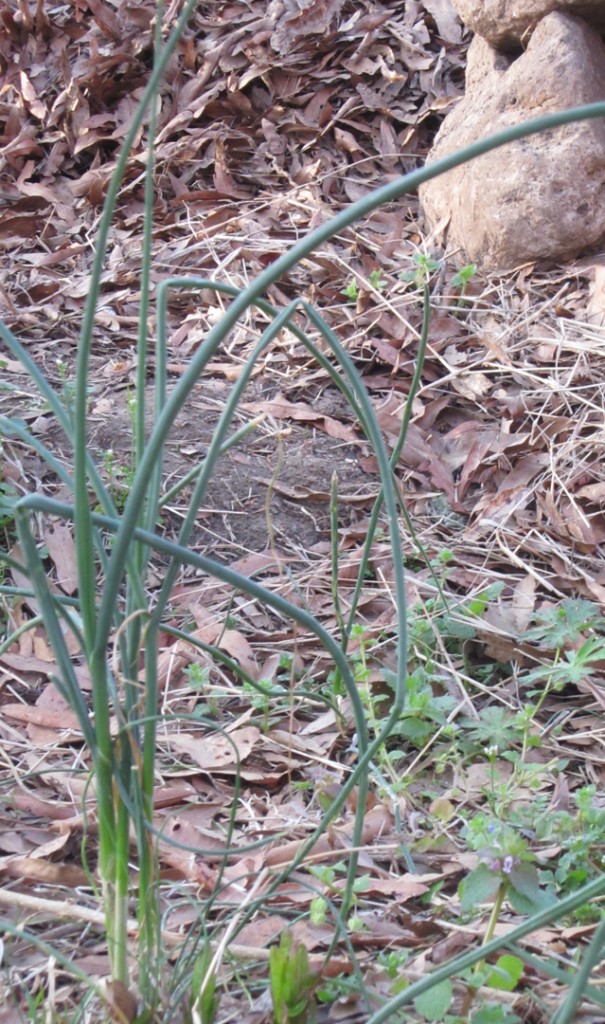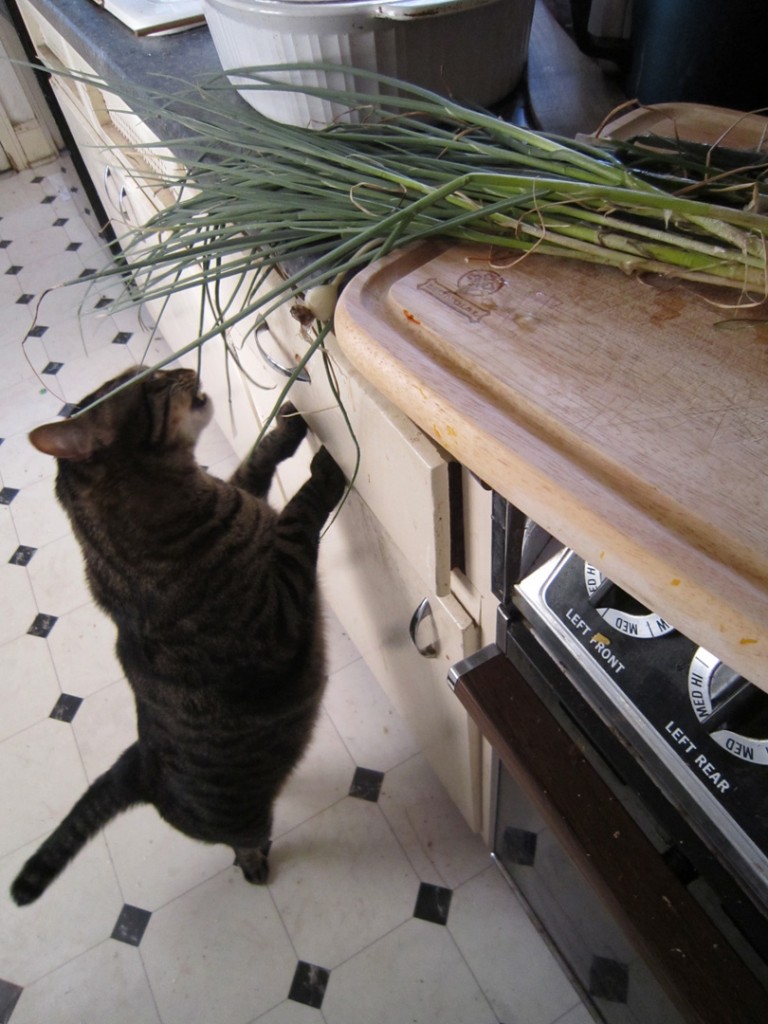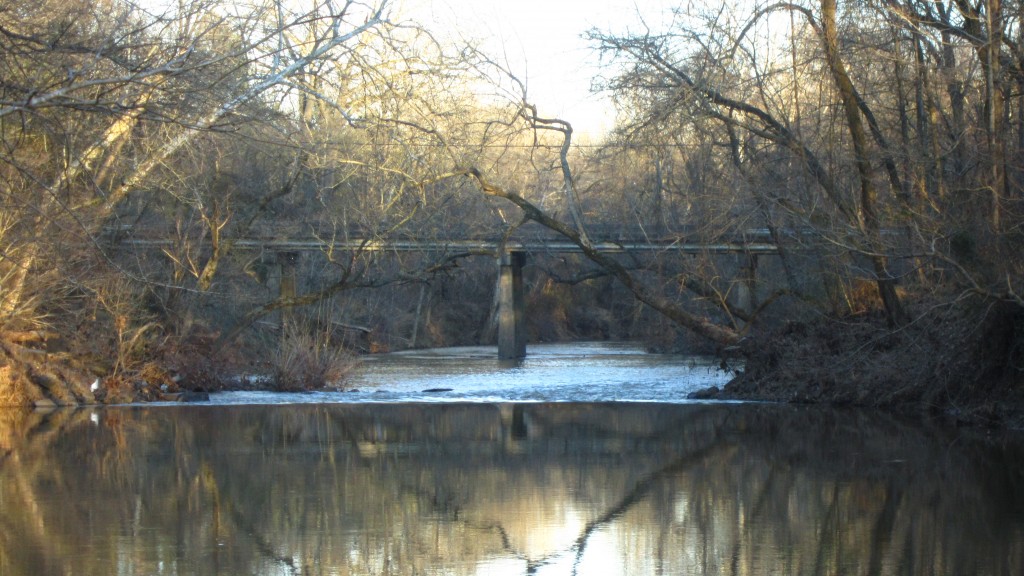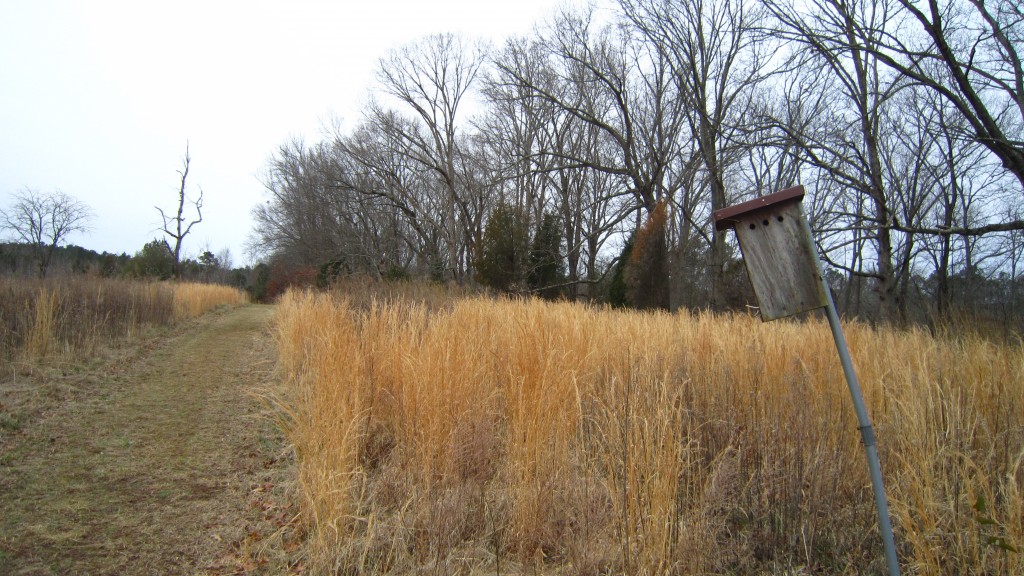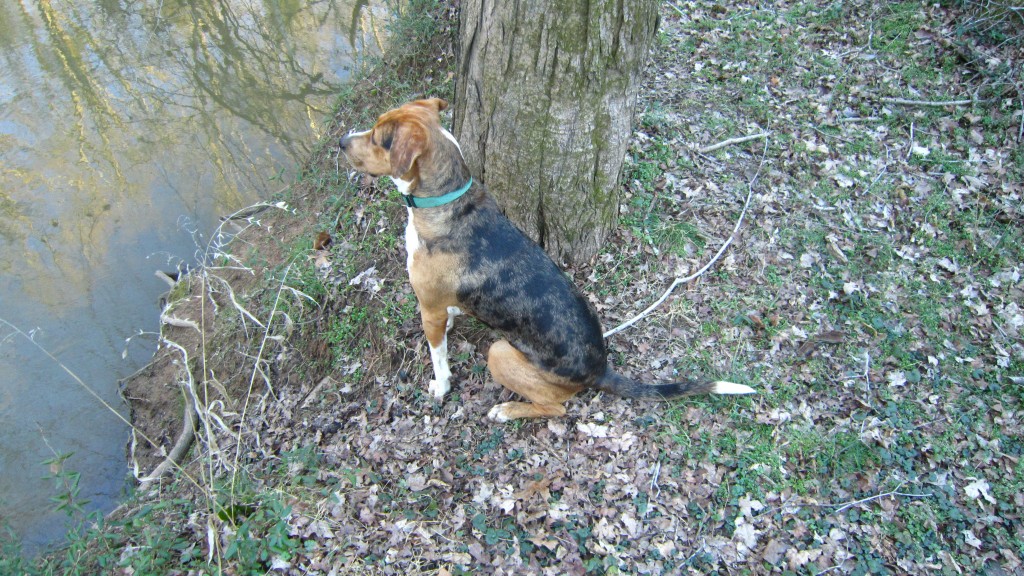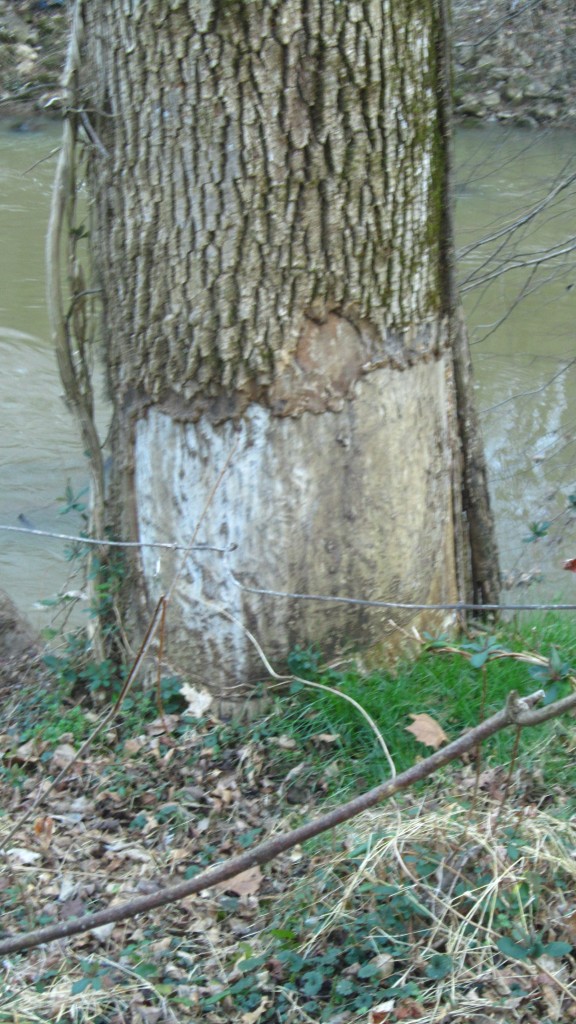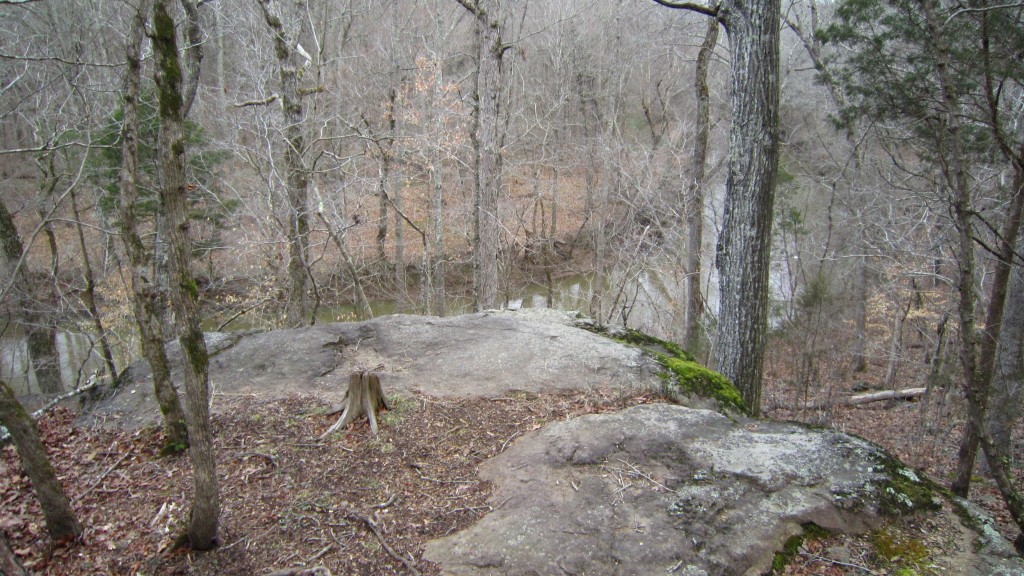School Days
Monday is L’s first day of classes at Club Boulevard School and he is really excited. Yesterday we delivered some snacks and supplies.
Last Saturday we joined some of the parents, staff, and students in a mulching project for the school. Levi had a good time mulching the walkway with his principal, Ms. Phillips.
It was a lovely spring day and everyone was in good spirits. L. had a good time working alongside his peers.
Blueberries are for the Birds
Being a permaculture enthusiast means playing the long game sometimes. It’s kind of like having an investment that eventually pays dividends.
I bought our house in 2007 knowing that I would be putting down roots in the City of Durham. What sold me on the property was our backyard—a fenced-in double lot, unusual for a house in the city. I remember kneeling down and scooping up some of the soil with my hands. The soil was black and earthy, unusual for our area where red clay is the norm. An old-timer from our neighborhood later told me that many years ago our backyard had been a sweet potato field.
A sign that things are now paying off is that after 12 years of trying, there were finally enough blueberries this year for our family and the birds. I had considered putting nets on our bushes to keep the birds away, but I didn’t relish the thought of picking birds out of nets. Plus it would just look kind of ugly.
I also thought about a cat we once had who used to kill birds. I did not want to be responsible for any more death and destruction. Eat freely, little birds, and sorry about all that carnage.
How wonderful that we can join the birds for this year’s bountiful harvest.
The Fledglings
Our 3 bluebird babies. born on Easter Sunday, left the nest on day 17. It was a remarkable experience to see these little things on the day they were born–tiny and hairless, like little pink shrimp.
We were all amazed at how quickly they developed. By day 4, we could make out their eyes–still fused shut. When I peeked in, they opened their little mouths, thinking it was feeding time. They were still covered with soft, gray down.
After a week or so we could make out the feathers. The last picture I took of them was day 16.
The bluebird parents did an excellent job guarding the perimeter, perched on our fig tree. We became familiar with their sounds and watched as they flew in and out, delivering grub worms to their hungry babies.
Our massive tabby Franklin would occasionally look up at the house, licking his lips and making that funny, chattering sound known as the kill-bite reflex. Too big and clumsy to scale the pole for a snack, he kept other potential predators at bay. Guardian of the yard, he resumed his usual practice of hunting for frogs in the pond. Fortunately, they too have proved elusive.
I told Levi we’d clean out the birdhouse and let another family start over again. He seemed pleased.
To Plant a Rainbow
One of Levi’s favorite books is Planting a Rainbow by Lois Ehlert. In this beautifully-illustrated board book, a mother and daughter plant a rainbow of flowers in their garden. One night after I finished reading the book to him, Levi told me that he wanted to plant a rainbow garden too. That week he’d been learning about the colors of the spectrum in school.
 “Alright,” I said. I told him we could start in the front of the yard since we had a nice row of daffodils there. “We already have a lot of yellow,” I told him. That seemed pretty reasonable to him. “But we need to get some flowers that mama likes,” he said. I told him that his mother’s favorite flowers were tulips, so we could start with those.
“Alright,” I said. I told him we could start in the front of the yard since we had a nice row of daffodils there. “We already have a lot of yellow,” I told him. That seemed pretty reasonable to him. “But we need to get some flowers that mama likes,” he said. I told him that his mother’s favorite flowers were tulips, so we could start with those.
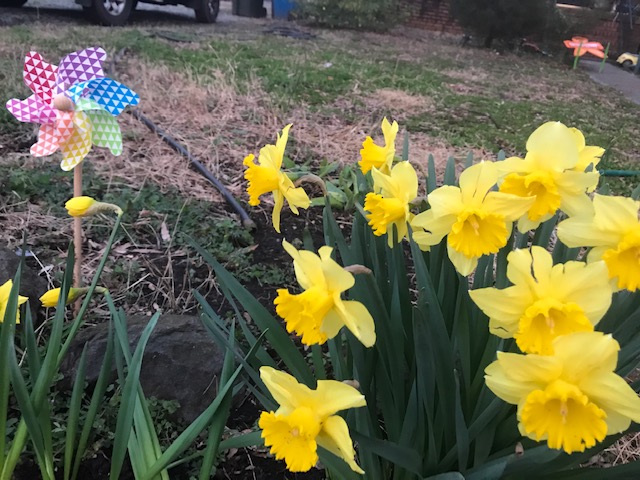 Later that week we went to the garden store. Levi picked out some nice red tulips for Shawnna. We planted them in a row in front of the daffodils.
Later that week we went to the garden store. Levi picked out some nice red tulips for Shawnna. We planted them in a row in front of the daffodils.
The next week we added to the spectrum–orange marigolds and lampara, purple violets, and a beautiful cascading blue ground cover. A kind neighbor gave us some tiger lillies.
 I let Levi decide where he wanted to place the plants, and together we dug holes for them. Occasionally we’d dig up a grub worm which we’d leave for the bluebirds next to their house.
I let Levi decide where he wanted to place the plants, and together we dug holes for them. Occasionally we’d dig up a grub worm which we’d leave for the bluebirds next to their house.
After we finished planting, Levi wanted to make sure that the plants got enough water.
He made several trips to the backyard pond, dunking his watering can into the water and then racing back to the front yard to take care of the flowers. It was exhausting to watch.
By the end of the day, we were tired but happy. I am so grateful that this child loves being outside with me.
The Bluebirds and the Blueberry Bush
This weekend Levi and I worked and played in the yard together. It’s an exciting time now, as he’s able and interested in helping out on the “Family Farm” on Farthing Street.
A few weeks ago we put together a bluebird house and stand. I didn’t let him use the drill of course, but his eyes, much better than mine, were able to find the drill bits for me. We staked the house next to the pond and I told Levi I bet they will love it here at Farthing Pond. We just have to be patient and wait.
Saturday the bluebirds arrived. We watched as one sat on the house, puffed up mightily, defending his territory from cardinals and thrushes. This morning, Levi jumped out of bed, opened the curtain and was delighted to see one of the bluebirds sitting on the house.
Outside, daffodils were everywhere like little coming attractions for spring. Together we planted tulips, which he’d picked out at the garden store for Shawnna (he knows they are her favorite flower.)
As we planted the tulips in a row in front of the daffodils, we’d dig up the occasional grub worm. I explained to Levi how bluebirds loved them and we left some as a present for our new friends.
Levi called the ground squishy in some places and he was right. We’ve gotten so much rain this winter. Over the last couple of months, when it hasn’t been raining, we’ve been expanding our bioretention area in the back. The pitcher plant bog is saturated with water and has looked like a small creek at times during the recent rains.
The plants are loving all the extra water that we are catching coming down our sloped yard. For example, we have 3 paw paw trees that are budding now. The trees sit next to a fake stream bed that I carved out at the top of the yard in the back. Paw paws are river trees. We might actually have some to eat this year.
Another example: in front of the bog we have a blueberry bush that is almost eight feet tall. It’s grown like a weed this winter. It’s also expanding sideways and is taken over everything with little runners sticking out all over the place
There should be enough berries for both birds and humans this year.
Fig Eaters on Farthing Street
Trying to grow our own food has been a challenge, but in recent years we’ve had decent luck with our fruit-bearing plants like strawberries and blueberries, and our enormous fig tree. Every August we eagerly anticipate the fig harvest, and 2017 did not disappoint!
This year little Levi had fun picking figs for the first time. Earlier in the month I had explained to him that we can only harvest the figs when they feel “mushy.” After that, he’d run up to the tree and squeeze each green, unripe fig, saying “not ripe” to me.
When the first figs started turning, I pulled one off and broke it in half, showing him the sweet mushy inside, then took a big bite. He did the same with another fig but decided he didn’t really like the taste. That didn’t stop him from picking figs with Oma, though.

We are now enjoying Oma’s fig preserves, and have been eating them with toast, biscuits, and straight out of the jar.
The Healing Salve
A few years ago I wrote about my obsession with the miracle plant, Comfrey.
I wrote how the plant has been used for a variety of purposes over the years, from healing fractures, helping with skin irritations, insect bites and inflammation associated with rheumatoid arthritis. It’s a nitrogen fixer too, which means it’s a great fertilizer. I love it’s pretty purple flowers, too, and so do the bees. So I planted a whole bunch of it, and it turns out that it is a very vigorous perennial indeed.
Before I work in the yard, I usually pick some comfrey leaves, tear them apart and rub my arms with them. The leaves produce a semi-sticky substance, known as allantoin, which keeps the poison ivy at bay.
When my wonderful mother-in-law, Rosemary, recently paid a visit, I told her how I thought it would be a great idea to make a comfrey healing salve. Before I knew it, she had taken my idea and run with it. She started by drying a mixture of salve herbs, including the comfrey leaves.
Next, she infused the herbs with oils. I gave her a giant slab of beeswax that had been taking up space with my art supplies. I had used beeswax for an encaustic painting project a few years back. She took the beeswax, shredded it in the kitchen and used it to finish making the salve.
Then, after letting the batch cool, she put them in little tins. For my part, I’m trying to design a logo for her product!
Rosemary, who is a member of the Eastern Band of the Cherokee Nation, plans on calling her salve “Cherokee Rose’s Healing Salve.” I hope she gives Burt’s Bees a run for their money.
Currently she’s looking for one more ingredient to add to the mixture that will give it a more pleasant smell, as the tea tree oil in the mixture gives it a very slight odor, not unlike insect repellent.
At our house, Rose is known as Oma, and we always look forward to her visits. Here she is in 2015, right after Levi was born.
Nice work, Oma!
Beavers in the Park
Every weekend I strap Levi to my back–all 28.5 pounds of him–and head out into the woods for a little father-and-son nature hike. We both have a good time at some of our favorite places like West Point on the Eno or Occoneechee Mountain. It’s a good workout for me, too–I’m reminded of my backpacking days in the Boy Scouts of America.
Last weekend we decided to stay a little closer to home with a short hike down to Northgate Park, our beautiful 17-acre city park just a couple of blocks from home. A good section of the park has been transformed into a natural habitat after a stream restoration project from a few years ago. Along the banks of Ellerbe Creek is a “no-mow” zone which has grown wild with river birch, pine trees and a variety of plants and brush.
Apparently a group of beavers like it too, and have taken up residence there. I had spotted a small lodge a couple of weeks ago when walking across the bridge, so Levi and I decided to investigate. We followed one of the little footpaths down to the banks of the Ellerbe in view of the lodge. I took Levi out of the backpack and we both sat for a few minutes.
It wasn’t long before we saw a beaver swim from one side of the creek towards the lodge, then disappear. Regretfully, I was not fast enough to take a picture with my iphone, but Levi can vouch for me. He saw it too and started pointing and babbling excitedly. He kept running in the direction of the lodge, and I kept pulling him back, afraid that a beaver might jump out at him.
We went back a few days later, hoping to get another glimpse of beaver. Although we didn’t see any this time, we found footprints in the sand and gnawed bits of wood everywhere. We also discovered a second, smaller lodge further downstream, as well as what I think was the beginning of a third next to a concrete pipe. In the coming months and years it will be interesting to see what develops. Will their construction projects have any negative impact on the stream restoration there, creating challenges for the City? I will have to have a chat with friends in City Stormwater Services. Who knows, maybe Durham will have a second Beaver Marsh Preserve some day.
On Top of Pond Mountain
This weekend I went hiking with my father-in-law, Ken, and my brother-in-law, Jackson. Taking a day trip from Shawnna’s grandfather’s place in West Jefferson, N.C., we traveled to Pond Mountain, a 5,000 foot mountain in a remote part of Ashe County. Heading northwest, where the states of Tennessee, North Carolina and Virginia converge, we looked forward to seeing the spectacular view of three states.
Ah, Beautiful Tennova.
Thanks to the efforts of the Blue Ridge Conservancy, 1800 acres of mountaintop land here have been preserved for future generations.
One of the most important things about the Blue Ridge Conservancy’s efforts is the fact that the entire mountain is a major source of water. We found several small ponds on the high ridges of the mountain, and there were numerous small springs bubbling out of the side of the mountain. These springs become the creeks that feed into the New River, one of the oldest rivers in the world. The river flows south to north, just like the Nile.
Pond Mountain was aptly named by Thomas Jefferson’s father, Peter, when he surveyed the North Carolina-Virginia border in the 1700s. I’ve heard that Jefferson’s surveying was slightly off, extending a little bit of North Carolina further north than it should have been. I guess that just means there is more of North Carolina to love now.
Jefferson, along with Joshua Frye, ultimately produced a famous map in 1752, The Fry-Jefferson Map of the Royal Colony of Virginia. Highly influential, this map had serious implications for North Carolina history, as it marked for the first time The Great Wagon Road that thousands of Germans, English and Scot-Irish would take from Pennsylvania to the Yadkin Valley.
As we started hiking up the mountain, we passed fields of Christmas trees. We found more near the summit, and the very top of the mountain was cleared for planting. It made me wonder if they had a partnership with any Christmas tree farmers. After all, this northwestern corner of the state is the Christmas tree capital of the world.
Typical of mountains in this area, we found beautiful grassy balds.
Near the summit we found some stands of Carolina Nightshade, whose yellow
berries were used by the Cherokee Indians for various purposes.
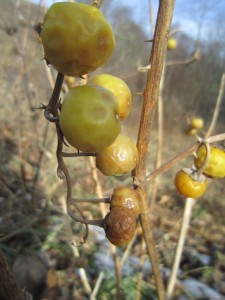 I’ve heard the Cherokee used the nightshade as an antihistamine, a sedative, and a pain reliever for teething babies. I, however, was disappointed that I wasn’t looking at cherry tomatoes. By that time we were getting hungry.
I’ve heard the Cherokee used the nightshade as an antihistamine, a sedative, and a pain reliever for teething babies. I, however, was disappointed that I wasn’t looking at cherry tomatoes. By that time we were getting hungry.
The view at the top was well worth the hike: looking north to Virginia, we could see Whitetop Mountain and Mount Rogers; to the west towards Tennessee, Cherokee National Forest; and to the South and east we saw numerous Ashe and Watauga County Peaks.
We slept well that night!
The Sweet Potato Harvest
Last weekend we dug up a bunch of sweet potatoes and transferred them to the cellar, where they’ll be curing for a few weeks under a fan. If they promise to be sweet enough by Thanksgiving, we just might let them out of the basement for the celebration.
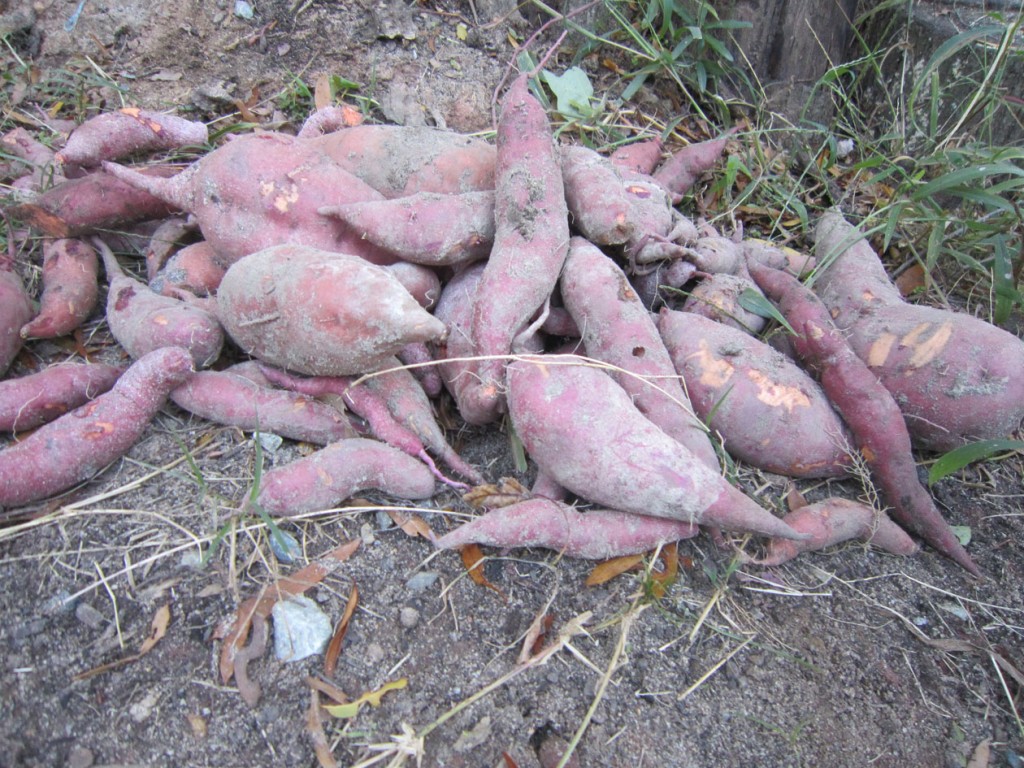
Earlier that afternoon I’d been staring at the pretty greenery of the sweet potato terraces I’d constructed back in the summer. Armed with a shovel, I hesitated for a minute, worrying that I might accidentally cut some of the little beauties open at first strike of the ground. I thought a little blessing might help prevent casualties. May this be a bountiful harvest, I whispered before taking a plunge into the ground. It didn’t work; as soon as my shovel hit the ground, I split a beautiful big sweet potato right in two.
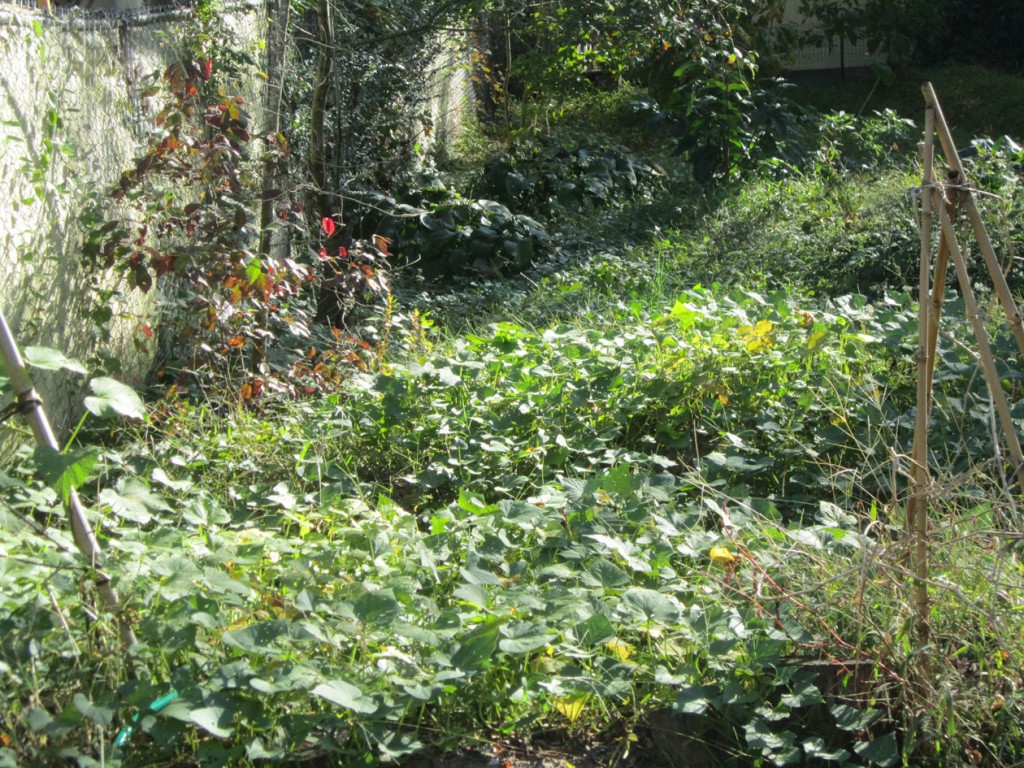
Suddenly it occurred to me that using a hoe might be a much saner approach to harvesting sweet potatoes. It was. From that point on I had fun pulling them out of the ground in one piece.

Next year we hope to get an even bigger yield by using drip irrigation from our rain barrels. This year I found the biggest potatoes in the sections of the terraces where the soil stayed moist. Those potatoes that had the misfortune of being in the under-watered areas suffered. When dry, the sandy loam tends to clump up into little blobs, leaving a little shriveled potato in the mix.
We look forward to dining on sweet potatoes this holiday season.
The Black Squirrel Winter
There’s a rumor going around that 2014 is going to be a dreaded Black Squirrel Winter for the N.C. High Country. I am shocked that, having grown up in Watauga County, N.C., I’m just becoming aware of this phenomenon, what the Native Americans referred to as Black Squirrel Winter or Winter of Sorrows. It sounds so dark and ominous, like the Winter is Coming motto from the George R.R. Martin’s epic fantasy series A Song of Ice and Fire. In my head I picture the ginger-headed House of Stark-of-the-Blue-Ridge-Escarpment whispering “Beware the Black Squirrel Winter” to one another, warning of the 16-year winter ahead, and the army of black squirrels that prey on human flesh.
The black squirrel is a darker version of the eastern grey squirrel, the result of a mutant pigment gene. They can be described as a melanistic variety. Melanism, of course, is the opposite of albinism. They evolved in old growth forests, which had much darker cover. Deforestation turned these squirrels grey: with the loss of the old growth forests, the black squirrels lost their evolutionary advantage, and grey became a better form of camouflage. Still, they’ve maintained steady populations in different areas of the country, including urban areas like Washington, D.C., where fewer predators make camouflage less essential for survival. They’ve also thrived in colder places like Ontario and the U.S. Northeast because they can retain heat in the winter much better than their grey cousins. This is probably why they don’t mind the unusually brutal North Carolina Winters when we have them.
The Choctaw had stories about the black squirrel being responsible for solar eclipses. Apparently the rodent liked to nibble on the sun. Villagers would try to frighten the squirrel away so that it would stop eating the sun; woman and children would shout and bang pots, while the men shot their weapons into the distance as if hunting for game.
If only frightening the black squirrels away could enlarge the sun, melting all the snow and ice. Winter is coming….
The Gash
I was in the kitchen prepping for a spaghetti dinner when I spied a beautiful string of cherry tomatoes beckoning me from the backyard. I knew they would be a tasty addition to the evening’s meal, and I was so proud of myself for being able to grow my own food. Practically running out of the house towards the tomato patch, my joy turned to horror when I picked up one of the tiny beauties and rolled it over. It was grimacing at me with a huge, angry, gash-of-a-smile. Soon I realized that all the tomatoes in the patch, big or small, were afflicted with cuts of varying pattens.
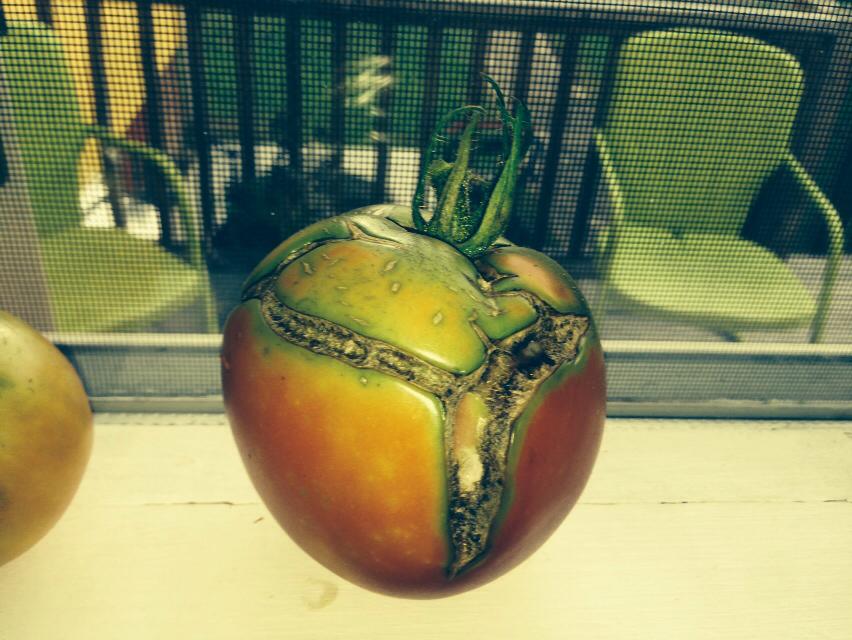
This has been the story of the summer. (I wish I had a good tomato for everytime one of my Triangle friends complained about their tomato crop this year.) 2014 has been an interesting year weather-wise here in Durham, with some hot dry spells followed by monster downpours. Call it Bull City’s Monsoon Season. From what I understand, it is this disproportionate watering cycle that causes the tomatoes to expand to accommodate the influx of water. When the skin can’t grow enough to hold all the water, it cracks.
Bottom line, tomatoes need consistent watering. This is why they can be so hard to grow, and why some people grow them hydroponically. It has me seriously considering growing them bins or big pots in 2015, using overflow from one of our rain barrels to keep them filled to capacity. If we decide to grow them in the ground again, we’ll probably use slow-drip irrigation from one of our larger rain containers. Increasing the amount of mulch around the plants will also help them retain moisture. Of course, one could always water their tomato plants every day, but what fun is it if you can’t let Nature do part of the work for you?
Lessons from the Incas
This week the Nature Boy is thankful for the ancient Peruvians. Everything
that’s been going on in the backyard lately, they did it first, and better, too. More specifically, I’m referring to my attempts at:
1. Growing (massive amounts of) sweet potatoes
2. Storing, capturing, and distributing water for growing food
This moment of recognition-gratitude came as I gazed out at the terraces I’d constructed on the left side of our sloped backyard. I looked at the sweet potato shoots sprouting out of them, and thought of those tiny tubers growing under the ground. I licked my lips in anticipation of the fall harvest. (My obsession with the sweet potatoes is well-documented.)
 The sweet potato was originally cultivated in South America, where remains of Peruvian sweet potatoes have been found going back almost 10,000 years. It has quite a history, but I’m just thankful that it made its way to the North American continent.
The sweet potato was originally cultivated in South America, where remains of Peruvian sweet potatoes have been found going back almost 10,000 years. It has quite a history, but I’m just thankful that it made its way to the North American continent.
Looking at the terraces, I started thinking about the elaborate stone-faced terraces that the Incas constructed on the sides of mountains. They used them for the same reasons I’m using them: to minimize erosion, to capture water for growing food, and to create usable gardening space in a sloped environment.
This week’s trip to the library took me to South America, where I’ve been reading about the history of ancient Andean irrigation systems like the Puquios, a system of aqueducts near Nazca, Peru. It’s been fascinating to read about how people tapped subterranean aquifers to create wells and develop drip irrigation systems.
As for the sweet potato, we’ll probably never know exactly how it got from South America to North Carolina. DeSoto writes about finding them in Louisiana in the 1540s. Several of our regional Indian tribes grew them, including the Creek, Cherokee, Saura, and Tuscarora. Today North Carolina leads the nation in sweet potato production.
Tree Cookies
This month we mourned the passing of this mighty oak, one of the original trees planted on Duke’s West Campus. It was all the buzz in the sociology-psychology building. Sadly, no one could recall the tree’s name. We’ll have to give it the posthumous name of a dead social scientist.
 Apparently the tree was terminal, suffering from a deadly fungus, discovered with the aid of sonic tomography. A tomograph is a technology that produces a cross-sectional image of a three dimensional object. In the case of a tooth, or a tree, it lets you see the rot that might not be apparent from the outside. I’ve heard that a lot of the “city” trees in Durham have a lifespan of around 80 years, so I’m not surprised that Duke was monitoring these. West Campus construction started in the 1920s.
Apparently the tree was terminal, suffering from a deadly fungus, discovered with the aid of sonic tomography. A tomograph is a technology that produces a cross-sectional image of a three dimensional object. In the case of a tooth, or a tree, it lets you see the rot that might not be apparent from the outside. I’ve heard that a lot of the “city” trees in Durham have a lifespan of around 80 years, so I’m not surprised that Duke was monitoring these. West Campus construction started in the 1920s.
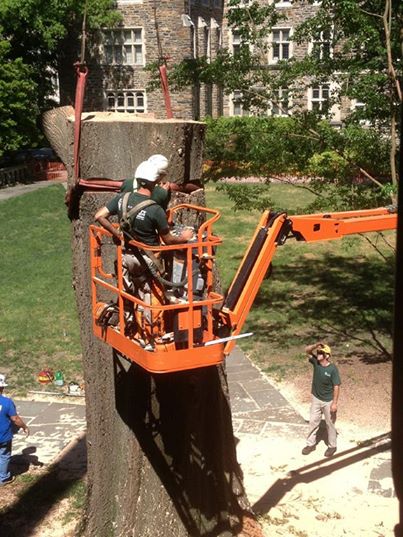 All week we watched with fascination and a little sadness as crews worked with a with a giant crane, hoisting huge pieces of the tree over the building into the parking lot on the other side.
All week we watched with fascination and a little sadness as crews worked with a with a giant crane, hoisting huge pieces of the tree over the building into the parking lot on the other side.
By Friday afternoon there was nothing left but a jagged stump.
Although the tree was gone, Duke promised that the good wood from the tree would be repurposed for use at the University and in the Durham community. Soon an e-mail circulated that there were tree cookies available for interested staff. At first I salivated on my keyboard, thinking of the Keebler Elves and their yummy confections. Then I remembered that I’d seen a one a long time ago in a science class. The teacher had shown us a tree cookie–a cross section of a stump or branch–to illustrate how trees grow. I remember counting the rings to figure out how long the tree had lived.
Last week I got the word that there was a tree cookie with my name on it. As I made the rounds, there seemed to be a cookie in every office. Bob Jackson proudly displays his cookie below.
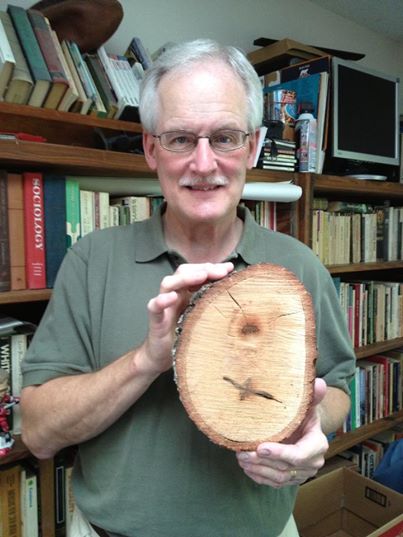 Call me master of the obvious, but this week I’ve been thinking about our attachments to trees and all the reasons we love them–their beauty, their majesty, the cool shade that they provide. Folks on one side of the building have suddenly found that their offices are a lot brighter. It’s sad to think that something that was planted when West Campus was just being built from what was Rigsbee Farm is now no more. Feeling a little sentimental, I started waxing poetic, going back to my favorite nature-poet, Robert Frost. Pausing for a second, I looked down at my desk to realize that I had been using my tree cookie as a coaster. Feeling just a little bit guilty, I wiped off the wetness and placed my cookie next to the window.
Call me master of the obvious, but this week I’ve been thinking about our attachments to trees and all the reasons we love them–their beauty, their majesty, the cool shade that they provide. Folks on one side of the building have suddenly found that their offices are a lot brighter. It’s sad to think that something that was planted when West Campus was just being built from what was Rigsbee Farm is now no more. Feeling a little sentimental, I started waxing poetic, going back to my favorite nature-poet, Robert Frost. Pausing for a second, I looked down at my desk to realize that I had been using my tree cookie as a coaster. Feeling just a little bit guilty, I wiped off the wetness and placed my cookie next to the window.
Paw, paw, where’s my maw?
This weekend I got to play tree doctor as I performed an IVF procedure in our paw paw patch. Fortunately, the procedure was inexpensive, requiring only a plastic bag and a paint brush, and a knowledge of paw paw anatomy. Paw paws can be tricky to fertilize because they are too stinky for bees, giving off a carrion smell that attracts flies. The flies are supposed to pollinate them, but haven’t been doing a great job. Since our trees haven’t borne any fruit yet, I decided to step in.

Paw paws have an interesting developmental life cycle. When the flowers bloom in the spring, they start out as females. Note the stigma in the middle, which is part of the female anatomy.

After a few weeks, the female flowers morph into males,
becoming “hairy” with a coat of pollen.
The procedure was pretty straightforward: I would take some of the flaky pollen from the male flower of one tree and transplant it to the stigma of the female flower of another tree. Fortunately, I had a few male and female flowers on each tree.
Pretty soon I identified my first male donor. He was ready to go and didn’t need any priming.

My assistant handed me a plastic bag, and I began flaking the pollen off the male flower with a paintbrush, letting the pollen flakes fall into the plastic bag.

Then I went to a neighboring tree to find a female flower. “That’s a very healthy stamen you have, Ms. Paw Paw,” I said reassuringly.

With my artist’s brush I dabbed on the pollen flakes and gently applied them to the stigma of the female plant. We’ll see if anything bears fruit. It’s just a matter of time now…
A walk through Duke Gardens
On Saturday I woke up at the crack of dawn and headed to Duke Gardens. I had a homework assignment due at noon that day for my photography class, and I figured the gardens could provide some interesting subject material. There were snow clouds in the sky, and not a ray of sunshine, which concerned me. As I sipped my morning coffee, I worried that I’d have to use my Photoshop skills to enhance my pictures. Would my instructor notice?
When I arrived, the blue heron was waiting for me, and in perfect position.
Despite the cold and grayness, signs of spring were everywhere.
Seems like the Koi had gotten even bigger since the last time I saw them.

This waterfall wasn’t here the last time I came through with my camera.
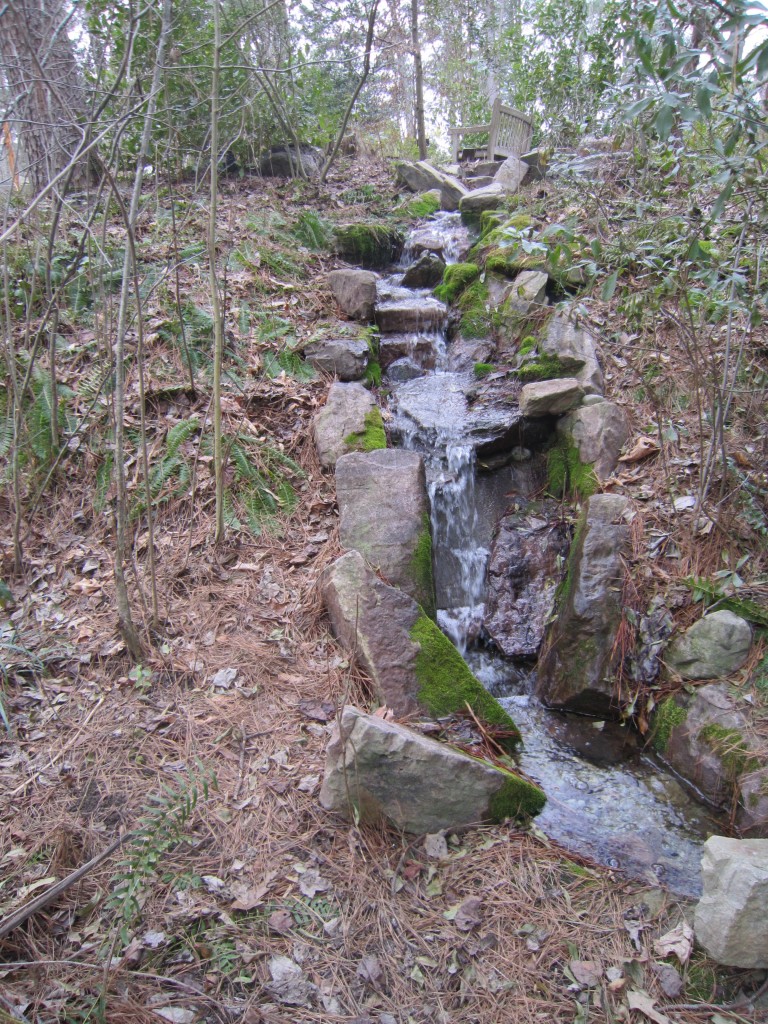
I kept roaming, looking for the perfect shot. For a while I had the whole place to myself. The peace and quiet was wonderful.
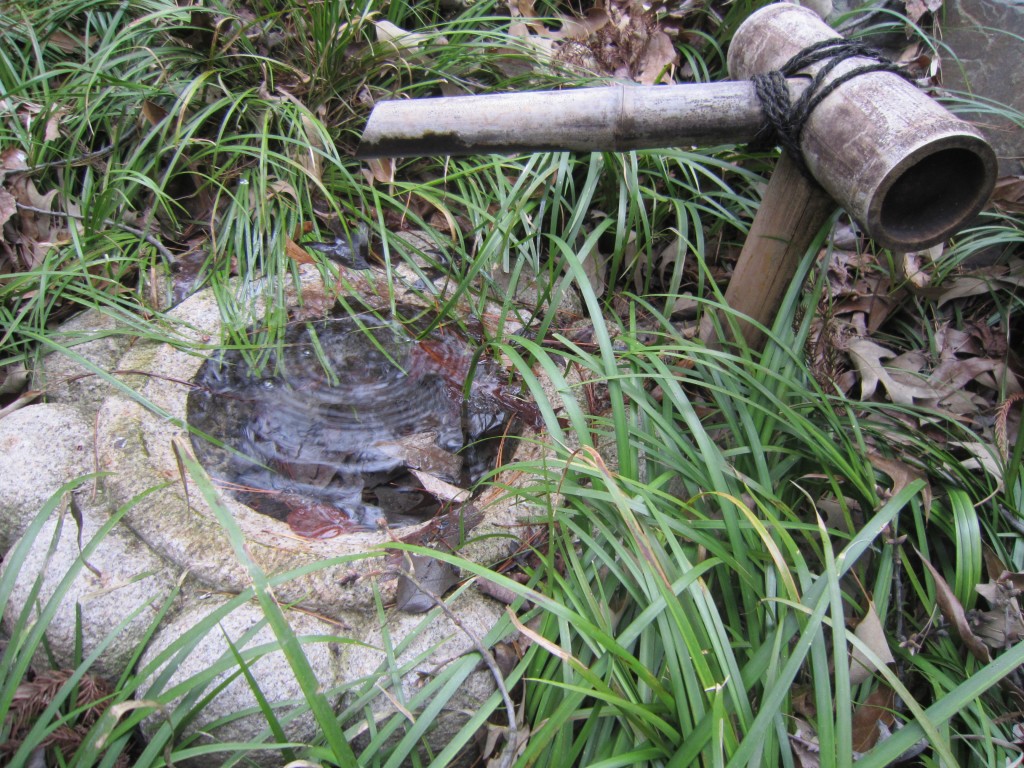
Next I headed for the bamboo forest on the eastern edge of the gardens.

I thought this bamboo-graffiti would make an interesting subject if I put it in the foreground.
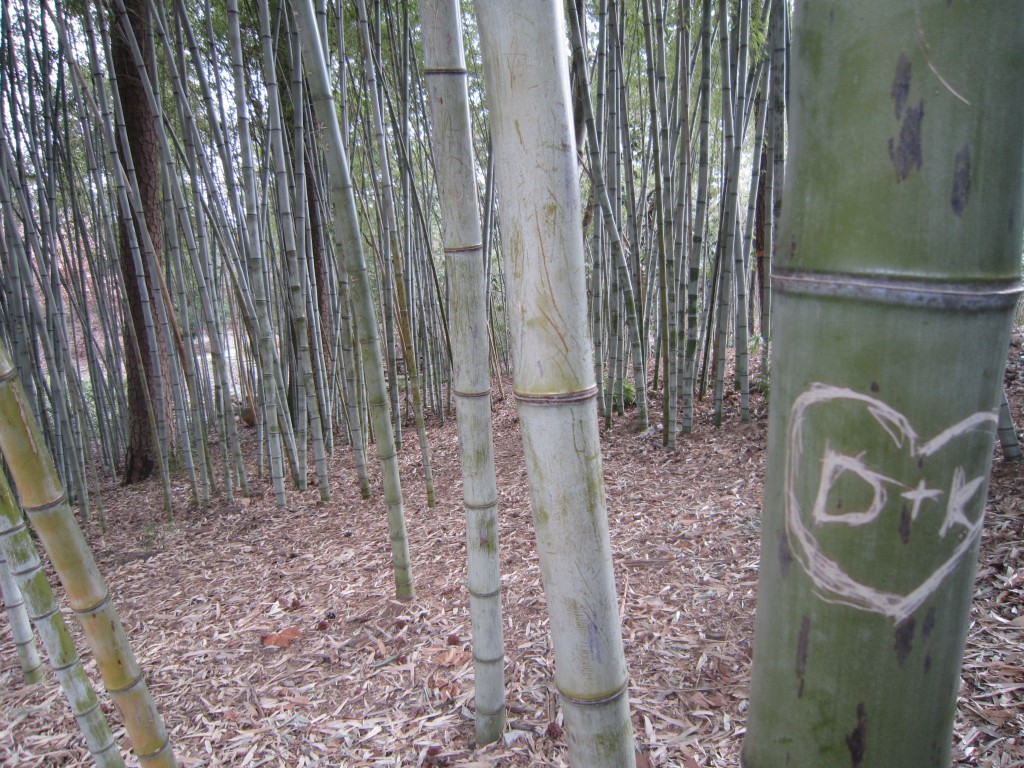
Coming out of the bamboo, I stumbled upon The Charlotte Brody Discovery Garden, a working homestead that includes a transplanted tobacco barn, a vegetable garden, and giant cisterns for water collection. The Brody Garden is one of two pilot projects at Duke that are part of the new Sustainable Sites Initiative (SSI), an international program created to promote sustainable land development and management practices.

Despite some of the primitiveness of the place, the fancy stonework and other stylized elements reminded me that I was still in Duke Gardens.
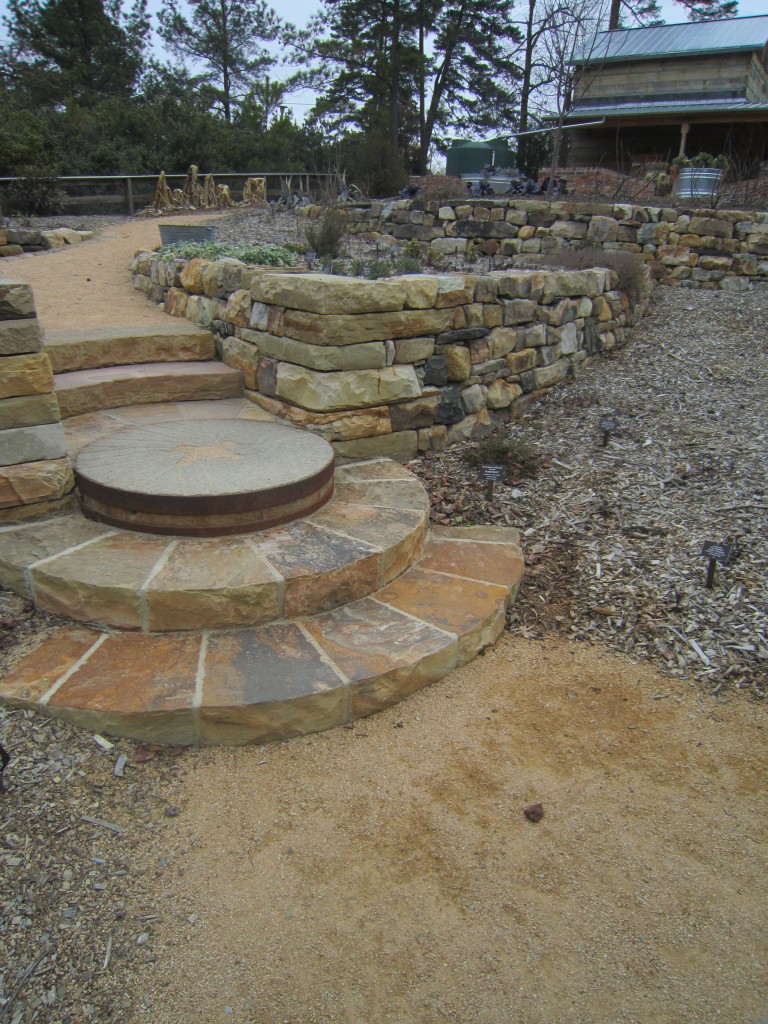
To my delight, a fancy pergola led me straight to a fancy chicken coop.

At the hen house, it was a veritable chicken potpourri. I counted 5 different breeds.
As I crouched to take some pictures, the chickens came running up to me, hoping that I was delivering their morning breakfast.
Having walked around for a couple of hours, I realized I was famished too, and headed back home for a bowl of oatmeal. I’ll be back to the Discovery Garden soon.
All creatures great and small
Winter Storm Leon moved into Durham last night, dumping several inches of snow along with plummeting temperatures. When I woke up this morning I noticed our feral cats, Sunshine and Gracie, weren’t at their usual spot waiting for me to come out and feed them. I saw their footprints in the snow and followed them to the edge of the pond.
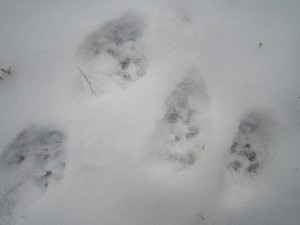 Farthing Pond had completely frozen over for the second time this year. The goldfish were hunkered down at the bottom of the pond, chilling until the next warm spell. I’m sure they’ll surface again if we get any sunshine in February. I decided to bust up the ice so the cats could have a little drinking water.
Farthing Pond had completely frozen over for the second time this year. The goldfish were hunkered down at the bottom of the pond, chilling until the next warm spell. I’m sure they’ll surface again if we get any sunshine in February. I decided to bust up the ice so the cats could have a little drinking water.
After a few minutes Gracie decided to come out of her hiding place and have breakfast.
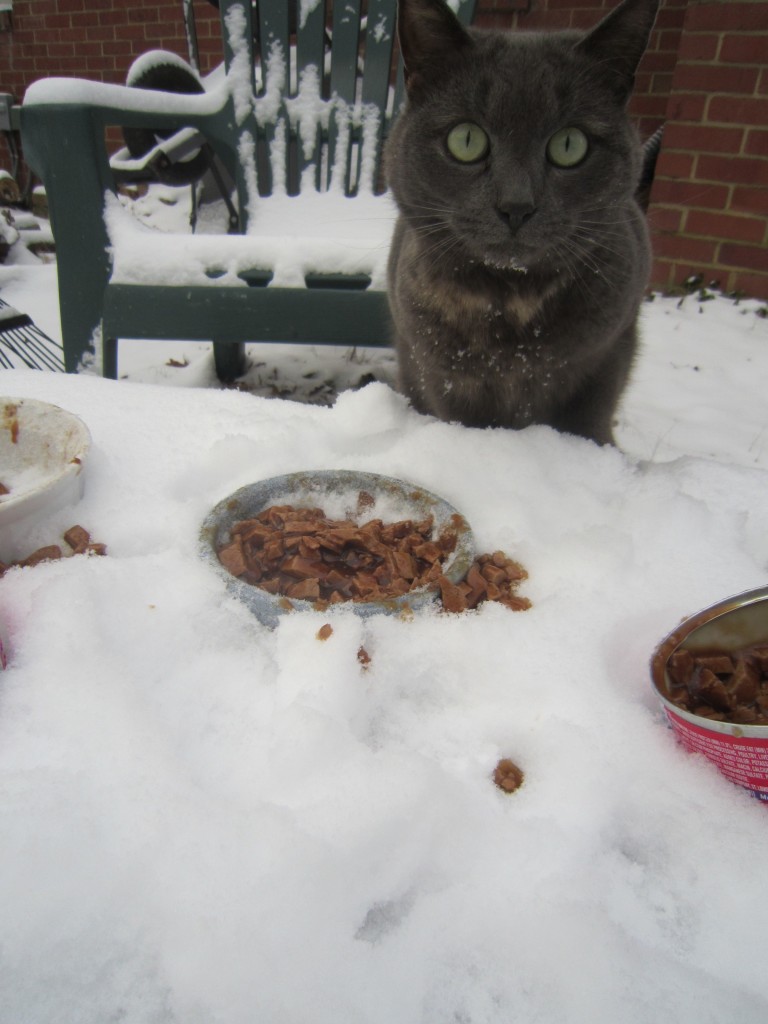
By the time I’d gotten back inside, Shawnna was checking out the bird scene in the front yard. The chickadees, cardinals and wrens were taking advantage of her squirrel-proof bird feeder. Franklin, our indoor tabby, could barely contain himself as he watched behind the screen door, making that funny chattering sound cats make, known as the kill-bite reflex.
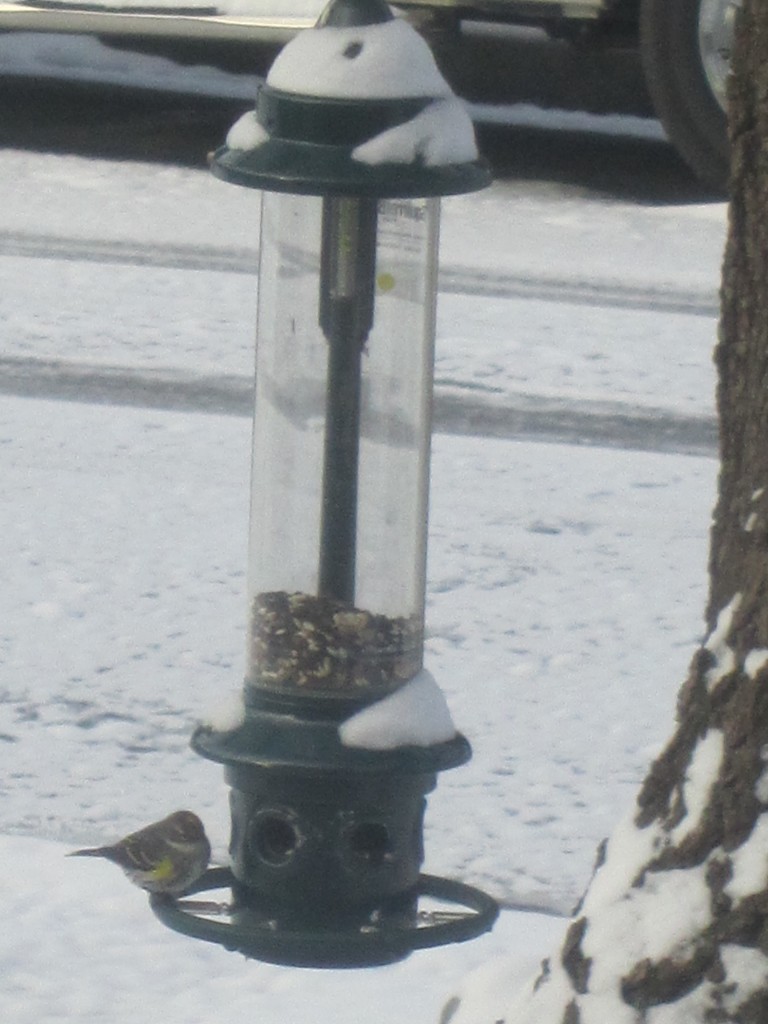 We’ve finally decided to join Project Feederwatch, the winter-long survey of birds sponsored by The Cornell Lab of Ornithology. They say that 292 species of birds have been spotted in the Durham area. Our favorite bird from today was a red-bellied woodpecker, who is just a little bit big for the bird feeder, but nevertheless decided to take a stab at it before giving up. Here he is hanging out on the trunk of the big oak tree in the front yard.
We’ve finally decided to join Project Feederwatch, the winter-long survey of birds sponsored by The Cornell Lab of Ornithology. They say that 292 species of birds have been spotted in the Durham area. Our favorite bird from today was a red-bellied woodpecker, who is just a little bit big for the bird feeder, but nevertheless decided to take a stab at it before giving up. Here he is hanging out on the trunk of the big oak tree in the front yard.
The Flowers and the Polar Vortex
I miss the mountains, but living down here in the Triassic Basin has its advantages. The abundant sunshine is good for the soul. I was reminded on Friday of another reason I love living here: the 12-month growing season. After the coldest week we’ve had in a long time, I was astounded to see our daffodils and tulips coming up in the backyard.
Flashback to Monday. Bracing for single-digit temperatures, we left the kitchen faucet dripping. On my daily bike ride into work, I wore ski goggles and four different layers.
And now, a few days later, my grandmother’s daffodils and Shawnna’s tulips are popping up to say hello.
Christmas on the Creeper
The day after Christmas I took my bike up to the Virginia Highlands. My destination was the Virginia Creeper Trail, an old railroad line that was turned into a 33-mile trail back in the 80s. It is one of the best bike trails in America in one of the most beautiful places on earth. My mom’s family settled in the region hundreds of years ago, so it always feels like home to me.
Part of the magic has to do with the geology of the region, which creates some stunning scenery. Just looking at the rocks takes you back almost a billion years. The whole region is underlain by hard volcanic bedrock. This erosion-resistant rock, known as rhyolite, comes from melted continiental crust, which takes you back to the time of the continental rift. In addition to the large rocks, I noticed lots of little colorful rocks with beautiful patterns on them, which are also some kind of volcanic matter.
I met up with my cousin Pat near Damascus, Virginia, a convenient point between the trailhead, 17 miles up Whitetop Mountain, and Abingdon, Virginia, 16 miles in the other direction. We decided to skip the mountain climb and head towards Abingdon. Our leisurely ride took us around the south fork of the Holston River. We’d stop occasionally to check out some of the more interesting geological features and massive icicle formations.
We passed through a lot of pasture land on our ride. Next time, I’ll bring more apples for the horses.
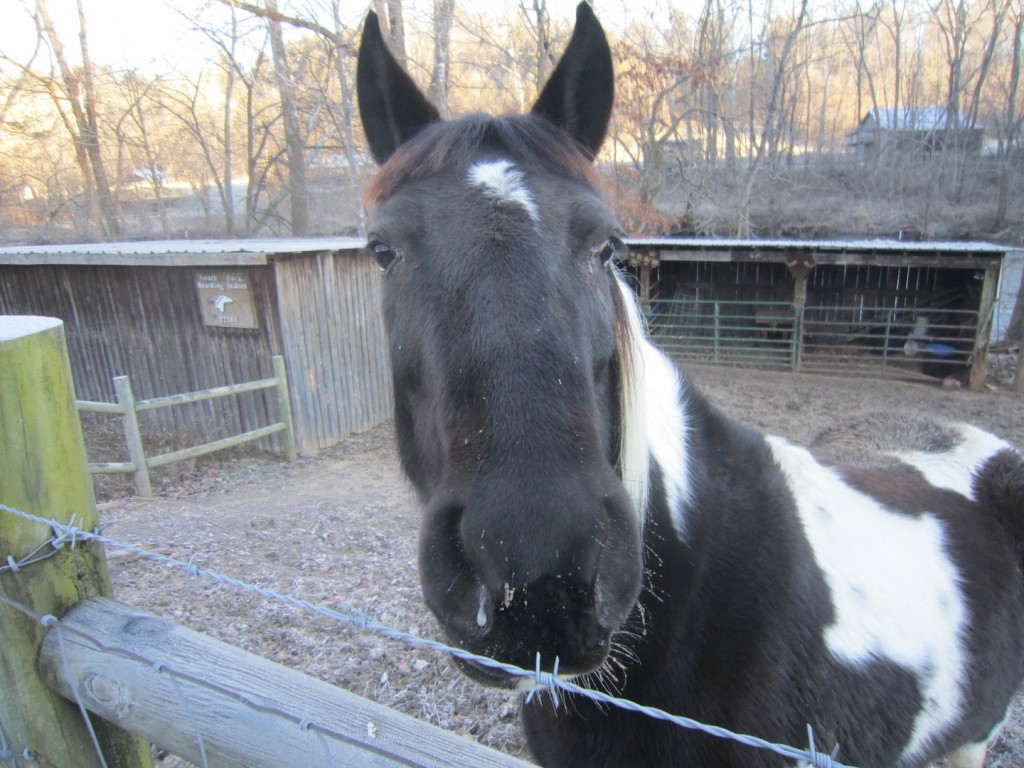
As we rode along the south fork of the Holston, we noticed a number of cabins for rent. My favorites were the tree houses. Maybe we’ll stay there next time.
After a bend in the woods, we passed a cave. I couldn’t resist checking it out. Although it seemed fairly cozy, I had already made plans to crash on the couch at the house my aunts had rented for our family gathering.
As the sun faded, the temperature dropped rapidly. We cooked a quick cup of hot
chocolate and then headed back to Damascus. That evening I stayed with my aunts, uncle and cousins. We got up the next morning and hit the trail again.
Nothing could have been more beautiful than mist rising off a waterfall in the morning sun.
Of course, with the beautiful, there is also the ugly. We found the head of a goat as well as a well-eaten wild turkey carcass. The coyotes must be hungry this year, and there must be lots of them. It made me remember that the original name of Abingdon was “Wolf Hills,” after Daniel Boone and his party were confronted by a pack of wild wolves.
I’d like to come back to the Creeper in 2014. Next time we’ll see if we can stay in one of the tree houses.
The Harvest
This week we brought our fingerling sweet potatoes up from the basement where they’d been curing after this fall’s harvest. Unfortunately our basement wasn’t as cool as we’d thought, so they were a little soft. Next year we’ll need to keep them under the fan.
This hasn’t make our little babies any less tasty, though—they are delicious–but it does mean we need to eat them up in a short amount of time. Of course, I’ve been binging on them from the moment I brought them up from the basement. It’s been a few days now, and my skin now has a nice, orange glow.
A couple of nights ago while peeling a bunch of them in front of the television, I discovered that our bobcat, Franklin, loves sweet potatoes almost as much as his daddy. He’s become quite a discerning herbivore with a sophisticated palate.
He loves the stringy ends of the fingerlings, usually slinging them around before crunching down on the delicious orange center. I gave him a few of the smaller ones. He seems to like the peeled skin too, which makes me wonder if he’s looking for nutrients. I did a little wikipedia research to find out about cats and vegetables. Apparently when cats kill a bird they eat the vegetable matter out of its stomach. Kind of gross, huh? Gives me an idea for a cat toy with a sweet potato center. 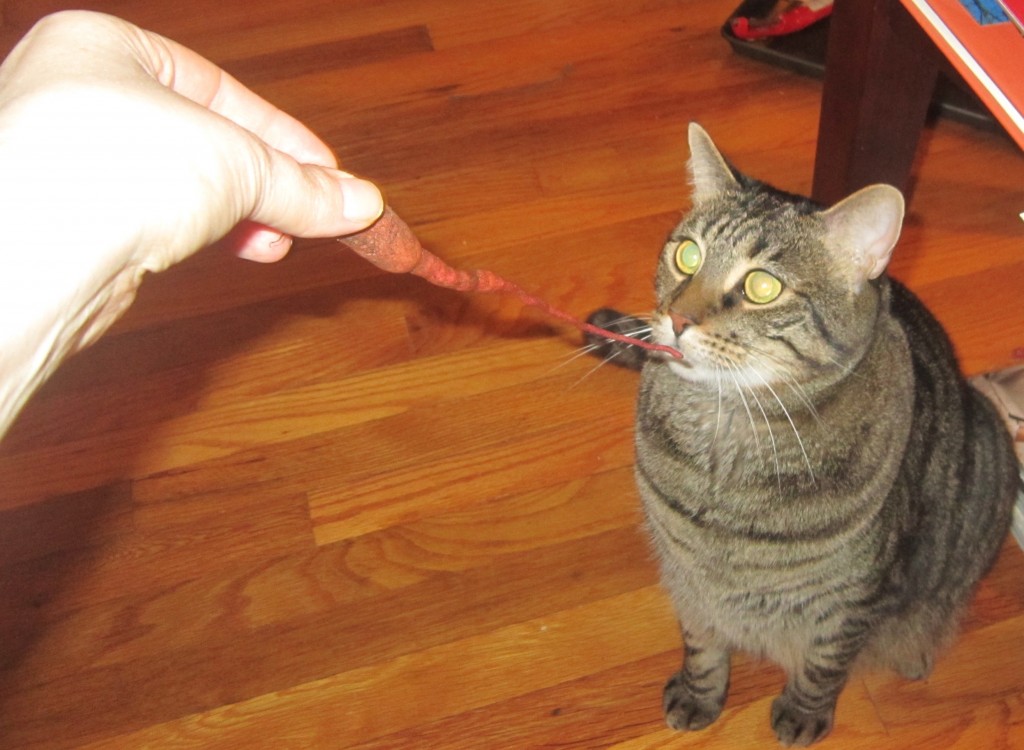
The coming plague
Triangle friends, I hope today’s headline scares you into reading this post. If you haven’t wrapped your oak trees yet, you’re running out of time. In December the female moths, after mating, will crawl up the tops of these trees and birth hundreds of green caterpillars unless they are stopped in their tracks. If you’re not scared yet, read my lamentful post from the spring.
This year I wrapped each tree with a band of cheap insulation covered by a second layer of tar paper. Yesterday I coated each tree-band with a ring of sticky Tanglefoot Glue, the adhesive that catches the moths.
I thought every store in the Triangle was sold out of this stuff, but it turns out Stone Brothers had family-sized tubs of it. Just like butter in a skillet, the glue went on better once it was heated up a little bit. I slopped it on with a stiff brush, learning after-the-fact that a putty knife would have been better.
The tree of greatest concern was “Old Cyclops,” the massive oak tree in our front yard that blots out the entire block from a Google-earth perspective.
He’s so named because of his one eye and small, gaping mouth. He’s so enormous that I used half a tub of glue on him.
Let’s hope this helps curb the worm infestation.
The Rogue Squash
This year we had some butternut squash (Cucurbita moschata) grow up out of nowhere in our backyard. I’m sure a kindly bird dropped the seeds off for us (unless there is a Squash Fairy.)
 I cut off a piece and tasted it; it was the most delicious piece of raw squash I’ve ever had. Later that afternoon I discovered a little secret, though: squash tastes even better when cooked with cream and sherry. That evening we dined on squash soup!
I cut off a piece and tasted it; it was the most delicious piece of raw squash I’ve ever had. Later that afternoon I discovered a little secret, though: squash tastes even better when cooked with cream and sherry. That evening we dined on squash soup!
To prepare the soup, I had to cut the squash in half. This turned out to be an excruciating task. For a minute I thought about getting the electric saw out of the basement, but that thing scares me. Thankfully, Shawnna suggested heating the squash in the oven for 10 minutes or so, which made it easier to cut through.
Once I’d cut the squash in half, I placed the pieces in a baking dish with a little bit of water and cooked at 300 degrees for about 30 minutes. After letting it cool for a couple of minutes, I took out the remaining seeds and peeled the skin away. Throwing in some ginger, salt and pepper, I chopped up the pieces and mixed them in the food processor. Meanwhile, I sauteed some onions with butter, nutmeg and allspice. Everything then got thrown into the dutch oven with vegetable stock, cream and sherry.
 I turned it up to a boil, and then let it simmer for a while. It was probably some of the best soup I’ve ever made.
I turned it up to a boil, and then let it simmer for a while. It was probably some of the best soup I’ve ever made.
Squash is a New World Native and was growing in Mesoamerica before the arrival of any humans. It was part of the diet for many indigenous people from South American to Canada, who started cultivating it between 8 and 10,000 years ago. I wonder if they had any soup recipes?
Flying chickens (and sweet potatoes)
The vagrant chickens of Farthing Street have been reunited with their owner, who has vowed to clip their wings.
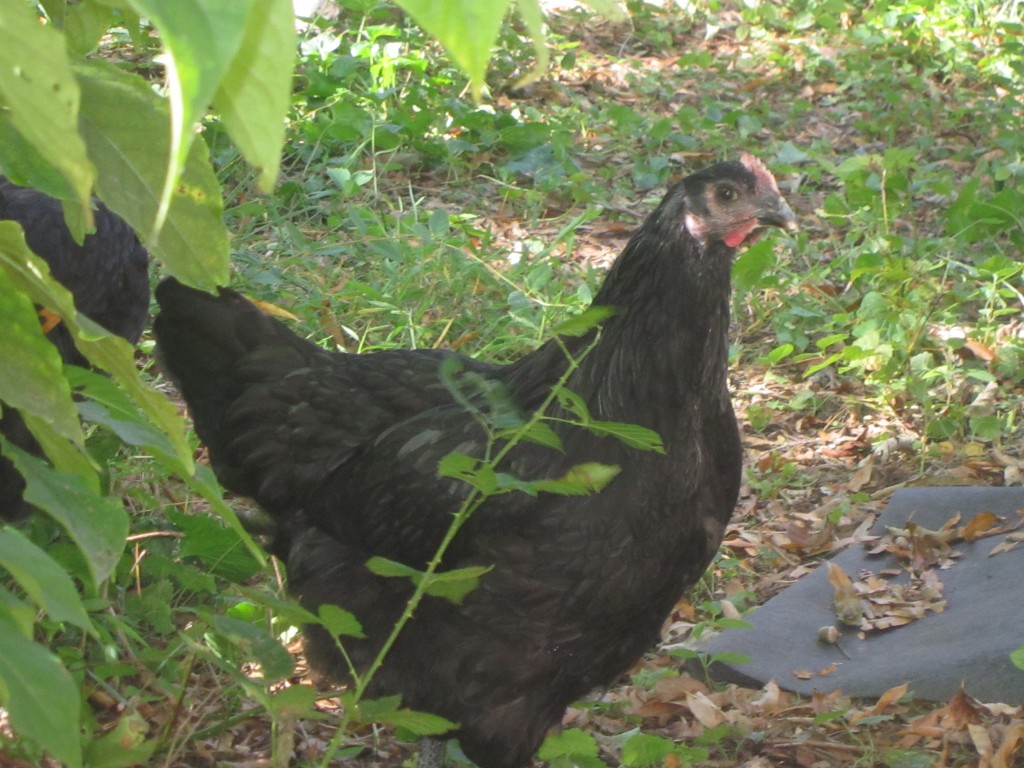 Who knew that chickens could fly? I sure didn’t.
Who knew that chickens could fly? I sure didn’t.
Of course, their flying acumen is akin to the Wright Brothers first flight. These things aren’t ready to make a transatlantic voyage yet, but they were able to clear a fence and glide happily across another neighbor’s yard before landing in our tomato patch. (I’ve heard that chickens in the wild actually nest in trees. I’m sure the life of a wild chicken is “nasty, brutish and short” though.)
I had shooed one of the little darlings out of our sweet potato patch. It turns out she knew before I did that the sweet potatoes were ripe for harvest. When I went out to water the patch yesterday, I discovered a little dug-out area with the orange end of a sweet potato peeking through. They are Covington sweet potatoes, which are a little smaller than your run-of-the-mill sweet potatoes, but still just as tasty. Hooray!
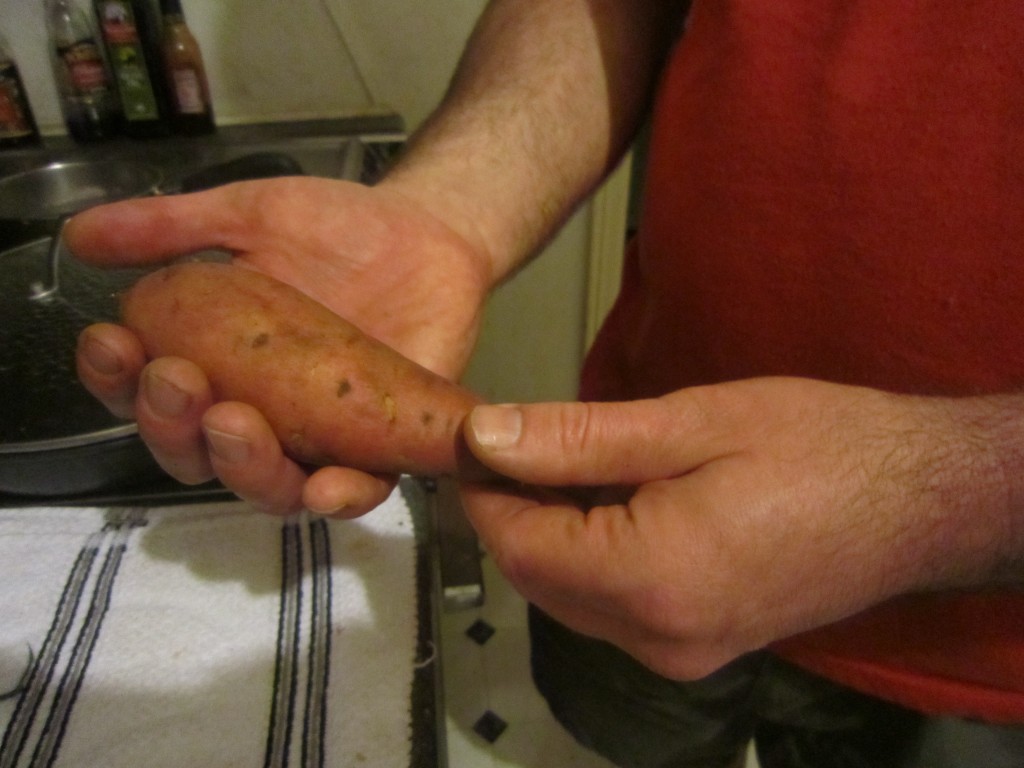 Now I feel inspired to attend Durham’s own ChickenStock Festival this Saturday down at Bull City Burger and Brewery. (I told you the Bull City is crazy about chickens.) The fun starts at 4:00 p.m. and is described as a “free, fun and funky edu-party that brings the community together to learn about urban chicken-raising and sustainable living.” The Bulltown Strutters, Durham’s own New Orleans-style jazz band, will be providing the musical entertainment. Inspired I’m sure by Oktoberfest, they’ll be playing “The Chicken Dance.” That alone would be worth the price of admission, but happily, the event is free.
Now I feel inspired to attend Durham’s own ChickenStock Festival this Saturday down at Bull City Burger and Brewery. (I told you the Bull City is crazy about chickens.) The fun starts at 4:00 p.m. and is described as a “free, fun and funky edu-party that brings the community together to learn about urban chicken-raising and sustainable living.” The Bulltown Strutters, Durham’s own New Orleans-style jazz band, will be providing the musical entertainment. Inspired I’m sure by Oktoberfest, they’ll be playing “The Chicken Dance.” That alone would be worth the price of admission, but happily, the event is free.
Peace out, chicken lovers.
A visit from the chickens
When I pulled open the curtains this morning, there were three enormous chickens in our backyard. I have no idea where they came from. I love Durham.
They are still in the backyard–consider this a live blog–and I still haven’t been able to find the owners. It’s very amusing. Of course, it’s all fun and games until they start eating your food. When I went inside for a few minutes, they descended on our ‘mater patch with a ravenous fury and started feasting on cherry tomatoes. So much for tonight’s salad. They seem interested in the sweet potatoes too.

The timing is uncanny. Those of you who read my last post know that I pretty much swore off chickens. I feel like they are asking me for a second chance.
The sun’s not yellow, it’s chicken
Before I die, I want to write a book called The Weird and Secret History of North Carolina. In it I’ll chronicle the strange, the beautiful, the little-known, and the god-awful things that have happened in this state, along with huge heapings of folklore.
In the meantime I have lots of reading and research to do. This week I’m reading volume 1 of The Frank C. Brown Collection of North Carolina Folklore. Brown was a professor at Trinity College (now Duke University) and founder of the North Carolina Folklore Society. The book is a fascinating read. Last night I was reading stories about voodoo and witchcraft in our state before stumbling across a chapter on plant and animal folklore. This section contains tiny little nuggets of advice, gleaned from multiple sources over a number of years. If there was a North Carolina Farmer’s Bible, this might be the Book of Proverbs. Here are just a few of them:
It is bad luck to thank anyone for plants or seeds.
Sage must not be gathered during the dog days.
To make hydrangeas blue, place indigo at their roots.
To my delight, there was a ton of advice about raising chickens.
Although I’m not the Chicken Man, I’ve been wanting to write an authoritative piece on chickens for some time now. (After all, I am the Nature Boy of Durham, and, as you might know, the Bull City has seen a near epidemic of Chicken Fever over the last few years. This is not to be confused with the Avian Flu. Chances are you know somebody in Durham, NC who has chickens in their backyard, or is talking about it. I’m thinking the “Durham Chicken” could be a good mascot for Durham Bulls games; a San Diego Chicken-like foil for Mr. Wool E. Bull, if you will.)
So here you go, my chicken farmers and wanna-be chicken farmers. Behold these pearls of wisdom. These were collected from a number of sources in North Carolina between the years 1912 and 1943:
If you set eggs when the wind is eastward, the chickens will “holler” themselves to death.
If you count chickens, turkeys, etc., they will die.
Hens should be set three weeks before the full of the moon.
If there are thunderstorms while eggs are “setting,” the eggs will not hatch.
To break a hen from setting, put an alarm clock in the nest and let it go off.
To break a hen from setting, put a pan of water in the nest when she leaves and let her get in it when she comes back.
Do not set eggs so that they will hatch during dog days.
Always set a hen on thirteen eggs.
Little turkeys thrive better with a hen than with a turkey.
If it rains on Valentine Day, your chickens will stop laying.
To ensure good luck with chickens, let a woman carry them from the nest to the coop.
Grease little chickens’ heads with lard and kerosene when you take them from the nest and lice will not bother them.
Sprinkle ashes on animals and fowls on Ash Wednesday and they will not be bothered with lice.
Put Epsom salts in the chicken’s water (one tablespoonful to a gallon) and it will make them healthy.
Boil smartweed and scald out the chicken house to kill any kind of insect.
Cover newly hatched chicks with a sieve and place them in the sunshine a little while, and they will live.
When you have killed a chicken, make a cross on the ground with your finger, lay the chicken on its back on this cross, and it will not flop.
To keep a chicken from flopping when killed, tuck the head under the wing, swing the chicken around in a little circle several times, and then lay its head on a block and chop it off.
Oh, and I’ve heard that raising chickens can be hard, dirty work. That’s not in the book.
Figgin Out
It’s fig season on Farthing Street.
 This annual harvest is accompanied by a sense of urgency because there is always a very short window of time, sometimes just a day or two, when a fig is truly ripe and ready for consumption. Left on the tree too long, the fig will ferment and become food for wasps and bees.
This annual harvest is accompanied by a sense of urgency because there is always a very short window of time, sometimes just a day or two, when a fig is truly ripe and ready for consumption. Left on the tree too long, the fig will ferment and become food for wasps and bees.
For weeks I had waited, somewhat impatiently, for that special moment. Shawnna would come home from work and find me outside, my face buried in the branches of the tree, deftly squeezing the bulbous fruit for signs of “mushiness.” The mushiness means that the fig is sweet and juicy.
 When that glorious day arrived, we had so many figs that I filled up a mixing bowl from the kitchen. I decided to try a recipe from our mediterranean cookbook, which involves wrapping the figs with pancetta and bay leaves, and then cooking them in the oven.
When that glorious day arrived, we had so many figs that I filled up a mixing bowl from the kitchen. I decided to try a recipe from our mediterranean cookbook, which involves wrapping the figs with pancetta and bay leaves, and then cooking them in the oven.
 For you vegetarians or those of you on a kosher diet, pancetta is pork belly meat that is salt-cured and contains peppercorns. It is heavenly. I was caught off guard when I took it out of the package. It smelled so good that for a minute I lost the ability to concentrate. Fortunately I had already halved the figs, and the rest was easy. I gently wrapped my figs in the strips of pancetta, like little pigs-in-blankets. The bay leaves were the finishing touch. I placed them in a baking dish and set in the oven at 300 degrees for 20 minutes. Shawnna and I couldn’t get enough of them. Figs in the raw are tasty enough, but this was a culinary delight.
For you vegetarians or those of you on a kosher diet, pancetta is pork belly meat that is salt-cured and contains peppercorns. It is heavenly. I was caught off guard when I took it out of the package. It smelled so good that for a minute I lost the ability to concentrate. Fortunately I had already halved the figs, and the rest was easy. I gently wrapped my figs in the strips of pancetta, like little pigs-in-blankets. The bay leaves were the finishing touch. I placed them in a baking dish and set in the oven at 300 degrees for 20 minutes. Shawnna and I couldn’t get enough of them. Figs in the raw are tasty enough, but this was a culinary delight.
Fig trees, which thrive in mediterranean climates, are drought-tolerant plants. That means you don’t have to water them much, provided your yard gets a lot of sun. If you live in the Triangle, consider getting one. The leaves are tough and leathery (you may recall that Adam and Eve, in their postlapsarian shame, made clothes out of them.) I’ve noticed that the leaves seem to be impervious to the pests that like to chew up our fruit trees.
Plant a fig tree this fall! You won’t regret it.
A frog named Jabba the Hutt
We’ve got a new friend in the backyard. An enormous bullfrog, who I’ve named Jabba the Hutt, has established a presence at Farthing Pond. We’ve become quite close; I can sit down right beside him and he won’t even budge. He does let me know that I’m in his territory, though. He even answered my greeting of Die Wanna Wannga. Unfortunately, that’s about all of the Huttese language I know. (It just occurred to me in writing that phrase that Huttese might have some relation to German, although die in Huttese is pronounced day as in neighbor or way, and does not appear to be used as a modifier.)

I named him Jabba because of his resemblance to the fictional character, particularly in his sheer enormity, his brownish-yellow hue, and bumps around his mouth. Later, I had some regrets about the name I gave him; after all, the character from Return of the Jedi exemplifies morbid obesity and personifies at least four of the seven deadly sins, including greed, lust, gluttony and avarice.
Me: Do you think it’s disrespectful that I named our friend “Jabba the Hutt”?
Shawnna: I think he would be honored to be named after such an epic story.
My wife, master of the re-frame. Strong with the Force she is.
2013 will go down in history as “The Year the Frogs Came.” We finished Farthing Pond in 2010, and it only took a couple of months for the word to spread amongst the amphibians. We’d hear tree frogs and the occasional bullfrog after heavy rains. This year is different. They’ve totally established a beachhead. We hear them every night now, lots of them, regardless of the weather conditions. I’ve asked several of my neighbors if the noise bothers them, but they don’t seem to mind, maybe because it drowns out the sounds of I-85. When I close my eyes at bedtime I can imagine I am in a more bucolic locale.
The frogs love hanging out in the various plant containers I have submerged in the pond, such as this scouring rush.
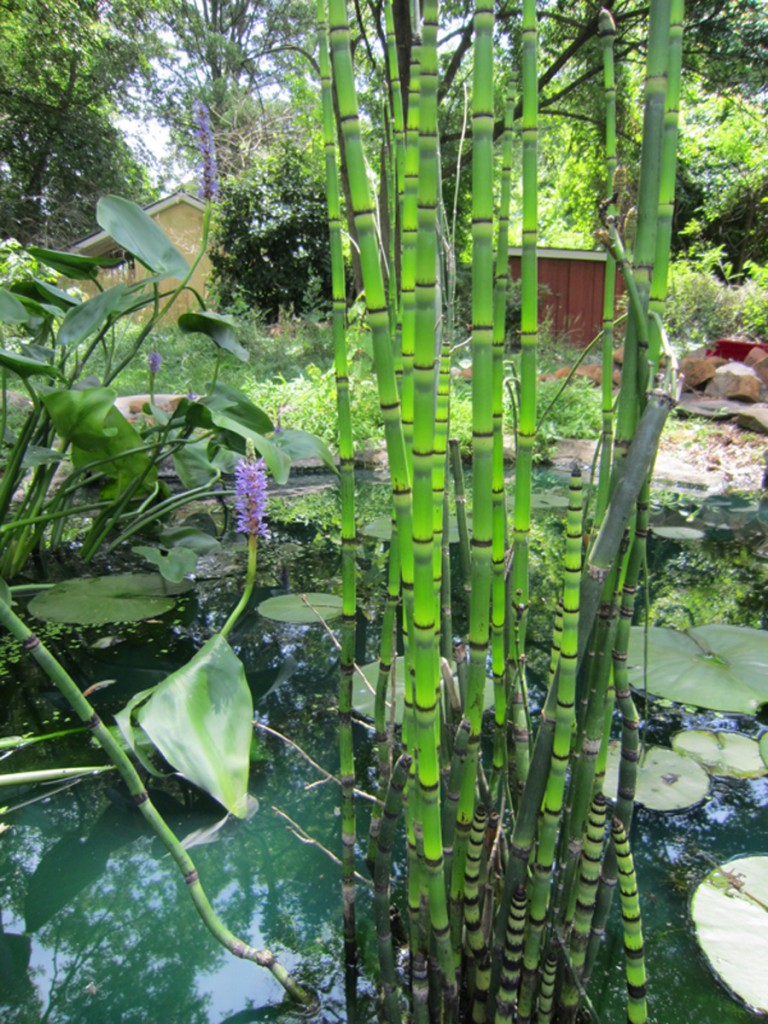
The containers are submerged in the pond and held up by pvc pipe. The frogs enjoy them because there is enough room for them to sit upright in the container with their eyes just above the water. I never realized that in placing these plants I had helped create an ideal habitat for our amphibian friends.
I found this little one while I was re-potting one of the containers.
Feeling inspired, I decided to construct a shelter in one of the containers. I named it “Jabba’s Palace.”
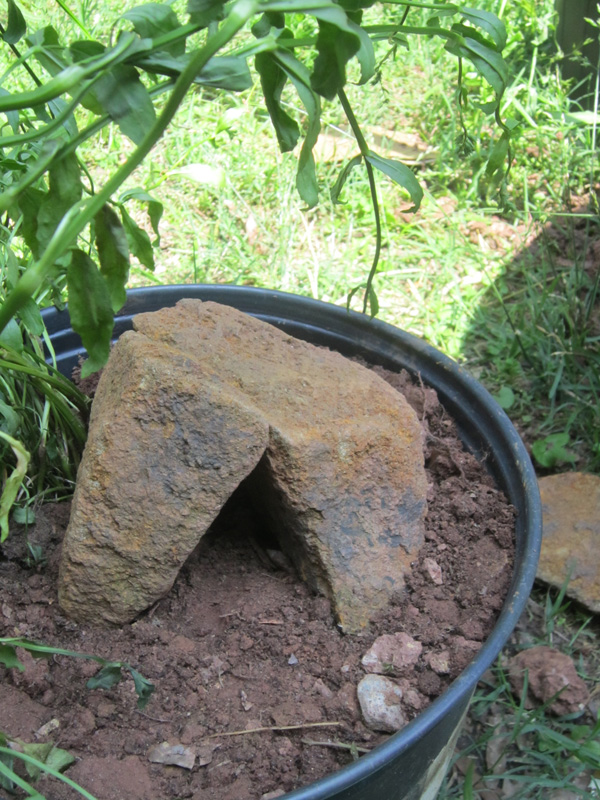 Hopefully this will be a nice place for Mr. Hutt or members of his clan to chill on hot summer days. Who knows, maybe it will even provide some protection from the herons, raccoons, crows and kitties who consider Farthing Pond a fun, locally-owned restaurant and watering hole. They are true Durham foodies, believe me. I think that the birds have realized that it’s a nice place to fuel up on their flights from Northgate Park to the Ellerbe Creek Beaver Pond.
Hopefully this will be a nice place for Mr. Hutt or members of his clan to chill on hot summer days. Who knows, maybe it will even provide some protection from the herons, raccoons, crows and kitties who consider Farthing Pond a fun, locally-owned restaurant and watering hole. They are true Durham foodies, believe me. I think that the birds have realized that it’s a nice place to fuel up on their flights from Northgate Park to the Ellerbe Creek Beaver Pond.
For various reasons, amphibian populations have been on the decline for the last few decades, including the extinction of some species. It makes me happy to know that we are encouraging amphibian conservation here in Durham. Even if you don’t have a pond at your house, constructing a toad house does not take a lot of effort. Remember that frogs and toads like to eat mosquitoes, and are a natural form of pest control.
For further reading, check out the Amphibian Specialist Group’s website.
Thrills from Blueberry Hill
For years we’ve been trying to grow blueberries, but we’ve had scant results. Despite giving them plenty of water–blueberry plants require at least an inch or two of water a week–the berries have always been few and tiny. That’s why my eyes almost popped out of my head when I visited our neighborhood friends Sally and Sandi yesterday.
Before my eyes were 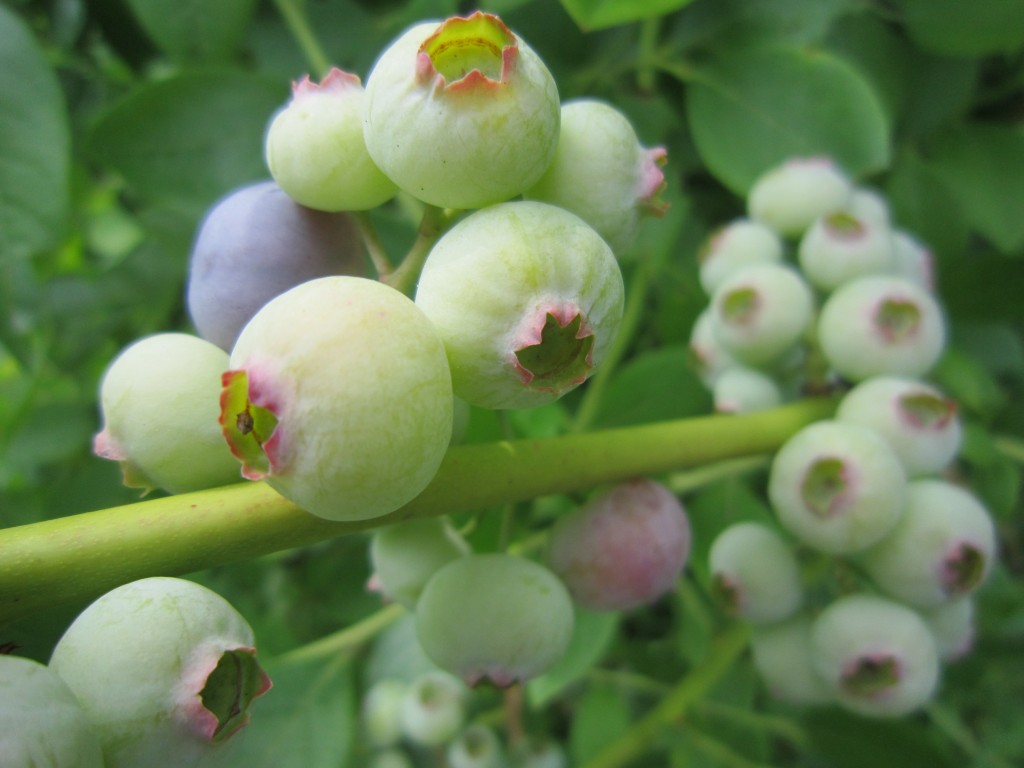 several blueberry bushes, sagging with plump, ripening fruit. Seething green (or blue?) with jealousy, I grabbed the biggest, fattest blueberry I could find, and ate it. At least it made me feel better.
several blueberry bushes, sagging with plump, ripening fruit. Seething green (or blue?) with jealousy, I grabbed the biggest, fattest blueberry I could find, and ate it. At least it made me feel better.
Naturally I wanted to know what their secret was. Comparing and contrasting their bushes with ours, I discovered three factors that seems to have contributed towards their more bountiful harvest.
First, their blueberry orchard sits at the bottom of a sloped hill, an area of the yard that gets a lot of drainage. In fact, it is the perfect location for a rain garden.
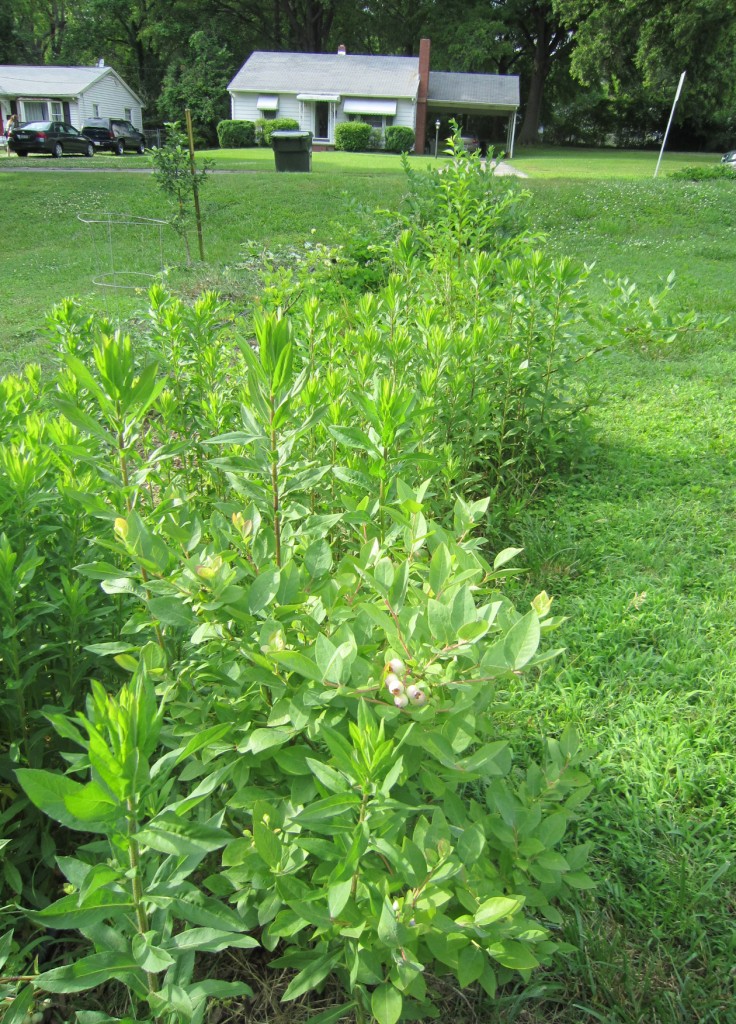 Sandi told me that they don’t water their plants very often, and I can see why. Permaculture at work!
Sandi told me that they don’t water their plants very often, and I can see why. Permaculture at work!
There are also no large trees near their yard, which meant that the plants weren’t visited by those pesky cankerworms this spring. These worms chewed huge holes in the leaves of our blueberry plants, which I know must have stressed them out. Next year we’ll be banding the trees in our yard to repel the cankerworm invasion.
What might be helping them the most, however, is something called soil acidifier, which is available at most garden centers. Sandi told me that she applies the soil acidifier at the base of the plant, careful not to get any on the leaves.
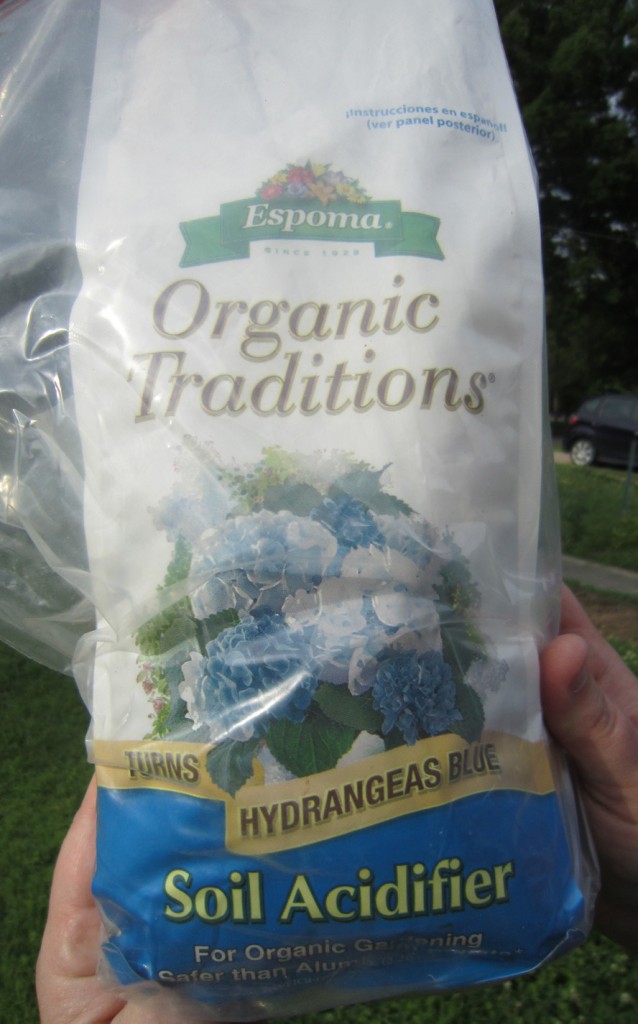 As you might know, blueberries love acidic soil, which is one of the reasons they thrive in the North Carolina mountains. Now I’m convinced that we might have the winning formula for blueberry production.
As you might know, blueberries love acidic soil, which is one of the reasons they thrive in the North Carolina mountains. Now I’m convinced that we might have the winning formula for blueberry production.
Why all this fuss about blueberries? For one thing, they are a healthy dessert alternative; one cup of blueberries has 80 calories. They are a true super food, containing antioxidants, Vitamin C and fiber. They seem to promote cardiovascular and brain health, and might help prevent certain types of cancers. Research studies have shown that they reduce brain damage in rats. And of course they are tasty!
For more on blueberries, check out the U.S. Highbush Bluberry Council’s website.
Nice work Sally and Sandi!
A slice of heaven
Last weekend the mountains were calling. On Friday we headed west, through the Yadkin Valley, then over the Blue Ridge escarpment to Elk Knob State Park in Meat Camp, North Carolina. The park is about nine miles north of Boone and only three hours from Durham.
(For those of you who are wondering, Meat Camp got its name from Daniel Boone and other hunters of the day who would pack their animal kill there before taking it back to the lowlands. It is not, contrary to what some might think, an Atkins-style weight loss camp.)
Elk Knob is North Carolina’s youngest state park, and owes its existence to the efforts of the Nature Conservatory and local landowners who kept it from being developed. The 3000-plus acres include a 2-mile trail to the summit of Elk Knob, Watauga County’s second-highest peak. The trail was completed in 2011.
The park is like nothing else I’ve ever seen in North Carolina, and I’m not being hyperbolic. I was in awe the whole time I was there. Once we reached about 5,000 feet, I started getting a little light-headed, as if I were hiking the southern Rockies again. Perhaps that might explain part of my euphoria.
Elk Knob is one of twelve mountains north of Boone known as the Amphibolite Mountains, composed of blackish-grey metamorphic rock known as amphibolite. We saw tons of it, as well as huge pieces of quartz. For a while I couldn’t stop taking pictures of all the interesting rocks.
These rocks are rich in nutrients, and as a result you find a lot of interesting plant life there, including endangered plants like Gray’s Lily. As soon as we got out of the car, we saw Trilliums everywhere, some together in large clusters. A kind stranger, probably as giddy as we were, told us that the White Trilliums become pink as they get older. We saw plenty of both.
Shawnna loved the Purple Trillium, also known as the Wake-Robin.
The amphibolite also makes the soil more alkaline than usual (a lot of mountain soil is acidic.) One consequence of this is that you don’t see any acidic-loving rhododendron at Elk Knob. Rhododendrons typically cover the western North Carolina landscape, but not here. In its absence there is an incredible variety of tree life. A lot of the trees on the mountain were ones that you’d find in northern hardwood forests. Take the buckeye, for example; Ohio usually comes to mind. Or the yellow birch, which is the provincial tree of Quebec.
Closer to the top, the trees became more stubby and gnarled, hardened from years of bitter winters and harsh winds. As we ascended, we both became somewhat light-headed. I guess we’ve lived in the lowlands too long. Next time we’ll stop and have a picnic at the stone bench halfway up the mountain.
The summit was breathtakingly beautiful. On the north side you could see as far as Pilot Mountain, near Winston-Salem. On the south side you could see as far as Mount Mitchell. And of course, you could see all the mountains in between. It was a true Blue Ridge panorama.
I took a nice shot of Snake Mountain, Elk Knob’s neighbor and another member of the Amphibolite range. It sits on the Tennessee border, near the community of Trade, Tennessee. In the 1970s, my mom taught at Trade Elementary School, which sat at the foot of Snake Mountain. One of my earliest memories is taking a field trip to Snake Mountain with my mom’s class as a three-year old. I rode in a little red wagon while the kids from my mom’s class took turns pulling me up the mountain.
Looking at the gap between the two mountains, I could make out the course of the Old Buffalo Trail, first used by migrating buffalo, then Native Americans, then the European settlers as they pushed westward.
We’ll be back to Elk Knob soon.
Tie a sticky ribbon ’round the old oak tree
And they shall cover the face of the earth, that one cannot be able to see the earth: and they shall eat the residue of that which is escaped, which remaineth unto you from the hail, and shall eat every tree which groweth for you out of the field. (Exodus 10:5)
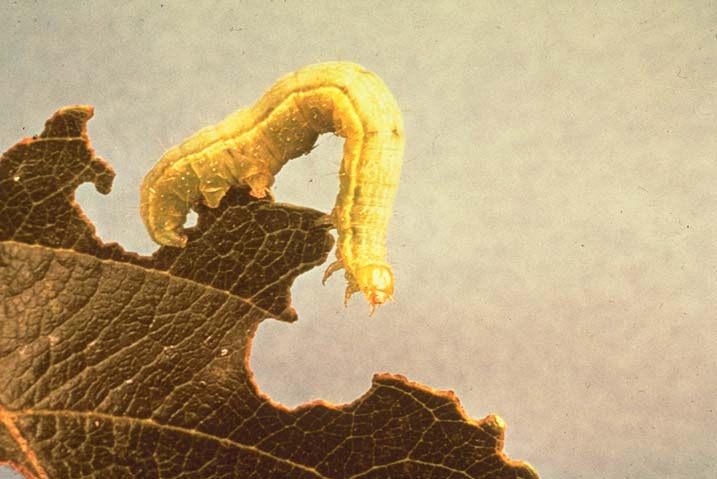
As many of you know, those little green cankerworms
invaded Cackalacky again this spring.
They’ve disappeared now that their larval stage is over, but they left a wake of destruction. The leaves on our fruit trees and blueberry bushes look like Swiss cheese. While not fatal for these plants, the damage certainly contributes to our under-performing fruit harvest.
Last month they were everywhere, in places like our front yard, chewing up the leaves on our enormous oak tree (apparently oak is their favorite.) Often they would bungee jump off the tree, tied to a little silk thread, landing on my face, arms, or slithering down the back of my shirt. Once Shawnna picked four of them off me before bedtime. Whenever I walked outside, I’d hear a crackling noise, reminding me of the sound of sleet or frozen rain. My neighbor told me that the crackling sound was the gentle falling of worm excrement. The horror!
It’s so bad down in Charlotte that the city actually has a municipal program to control 73,000 acres of cankerworm infestations. That’s about 40% of the city.
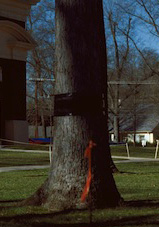 Tree banding seems to be the most effective way to deal with these worms. The sticky bands prevent the moths from crawling up the tree to lay their eggs, but they must be installed in November, because December is moth mating season.
Tree banding seems to be the most effective way to deal with these worms. The sticky bands prevent the moths from crawling up the tree to lay their eggs, but they must be installed in November, because December is moth mating season.
You can use a strip of cotton or insulation and wrap it around the tree, at least three feet from the ground, placed below the lowest limb. I’ve seen a lot of folks use staples to hold the strip in place. (One website recommends positioning a band of roofing felt over the strip and then attaching it with s staple gun.) Of course you don’t want to use staples on small trees, so try using something like electrical tape to hold the strip in place.
The next step is to coat the band with a sticky substance that prevents the moths from inching up the tree, such as Tanglefoot glue. The sticky band should be kept in place until the larvae disappear in April.
We’ll know better next time around!
Strawberry fields forever
Yesterday Shawnna harvested our first strawberries of the year. She waited until I got back from my trip to do this. I don’t think I would have had that kind of self control!
I got the plants last year from our neighbors Dan and Darcey, who had more strawberries than they knew what to do with. They told us that the strawberries were in such abundance that they could smell them when they got out of their car. The strawberries were so plentiful that some were rotting on the vine. They warned me that the plants would spread rapidly and would need to be thinned out. I told them we would love to have that problem!
Now our front yard is full of them, and there is the added bonus of not having to mow that part of the lawn. Life is good!
Solomon’s Seal
I think it’s time for a new series called Nostalgic Plants of Childhood, starting with Solomon’s Seal. As a youngster growing up in Boone, I’d always see this plant when I was hiking in the woods. I loved its gently curving leaves and tiny clusters of white, tubular-shaped flowers. Thinking it was a mountain plant, I was surprised and delighted when some shoots sprouted up in our Durham backyard a few years ago. Since then it’s returned every spring in all its beautiful glory.
A relative of the lily, Solomon’s seal is the name for almost 50 species in the genus Polygonatum. The kind I’m referring to is commonly known as “True Solomon’s Seal” (Polygonatum biflorum) not to be confused with False Solomon’s Seal.
The young shoots are edible and taste like asparagus when boiled. Unfortunately, the rhizomes only seem to grow about an inch or two a year, which means at this point it’s not really practical for us to harvest it. Too bad we don’t have it covering the backyard, like the huge patch we saw on Mt. Jefferson in Ashe County last summer. I’m definitely going to let it keep growing. It seems that our woody, shaded backyard is an ideal environment for it.
Looking online, I was also surpised that there seems to be a whole cottage industry associated with this plant. There is even a website, http://www.solomonsseal.net, that sells Solomon’s Seal for medicinal purposes. For hundreds of years people have used the root to make herbal teas and liniments. The alleged benefits of the root are numerous:
- Heals bruises, wounds and rashes
- Reduces inflammations in joints and tendons
- Reduces blood pressure
- Loosens mucous in lungs
- Prevents premature ejaculation
- Relieves premenstrual syndrome
- Hastens recovery from bone injuries
According to one source, the plant gets its name from King Solomon, who proclaimed that the plant was a gift from God.
It’s just a plant that is too beautiful for us to harvest.
Canoeing by moonlight
Friday night we took a nighttime canoe ride with our friends Cathy and Rob. We were part of a larger group sponsored by Frog Hollow Outdoors, who provided the boats and led us on the tour.
 We canoed in the Three Rivers area of Durham, which is where three rivers—the Eno, Flat and Neuse—converge and empty into Falls Lake. Putting in at the Eno River boat ramp off of Red Mill Road, our flotilla headed east, to the end of the Eno River.
We canoed in the Three Rivers area of Durham, which is where three rivers—the Eno, Flat and Neuse—converge and empty into Falls Lake. Putting in at the Eno River boat ramp off of Red Mill Road, our flotilla headed east, to the end of the Eno River.
Our guides asked us to turn off our lights so that we could utilize our nighttime vision. The full moon provided enough light for our paddle, and the weather was perfect. Occasionally a heron would fly overhead, and the owls definitely made their presence known.
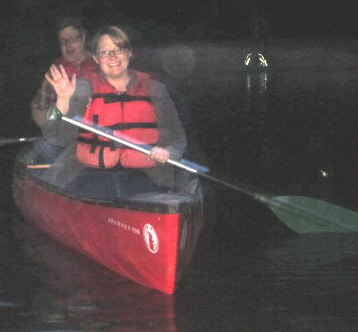 Soon we reached the end of the Eno and came to the headwaters of the Neuse. The Flat river stretched out to the north of us.
Soon we reached the end of the Eno and came to the headwaters of the Neuse. The Flat river stretched out to the north of us.
We sat there and listened to the unusual sounds of the cricket frogs. They made a surreal static popping noise, almost like a Geiger counter. One of our companions was startled by the slapping of a beaver tail.
Although we had a blissful paddle through the moonlight, we were glad when we got back to the boat ramp. That night we slept well, dreaming of herons and cricket frogs.
Way down yonder in the paw paw patch…
It made my morning to discover that our paw paw tree had flowered. The flowers are an astonishingly-pretty deep red with a hint of purple. We planted this tree a few years ago, but this is the first time it’s flowered, which means it should fruit sometime over the late summer.
I’ll be honest with you: I’ve never eaten a paw paw before, but I’m told they taste like mangos. They live in shady areas along streams and river basins in much of the Eastern U.S. When we planted this tree, we thought the back of the yard was wet and shady enough, and would be a nice addition to our edible landscape. When I create my first paw paw smoothie, I will be sure to write a post about it.
Does anyone remember this song from their elementary school days?
Pickin’ up paw paws,
Put ‘em in your pocket
Pickin’ up paw paws,
Put ‘em in your pocket
Pickin’ up paw paws,
Put ‘em in your pocket
Way down yonder in the paw paw patch
Bamboo
UPDATE: Dear readers, it turns out that the “bamboo” in my back yard is actually wheat. Shows you what I know. (5/10/13)
Recently some bamboo sprouted up in our yard.
The sight of it made me a little anxious, probably because I’ve heard enough bamboo horror stories over the years to compile an anthology. These are tales that pit neighbor against neighbor; someone’s well-intentioned bamboo screen screen gets out of control and crosses the property line where it becomes a problem for someone else.
There are two kinds of bamboo: running and clumping. The running variety is such a problem because its rhizomes grow laterally, through the soil surface, which make it spread very fast. I’ve heard that if you’re going to plant bamboo, definitely plant the clumping kind. Check out the difference:
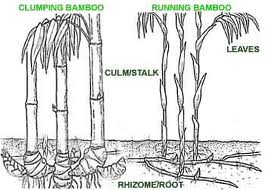
You can control the running kind by creating something called a rhizome barrier. The idea is to dig a trench around the bamboo that is at least two-feet wide, and just two inches shallower than the width. Because the rhizomes will eventually pierce through concrete and steel, a HDPE (High Density Polyethylene) barrier must be placed in the trench. When placing the barrier in the trench, it is essential to angle it in such a way that the rhizomes will move upward as they start to spread. That way, any rhizomes peeking over the barrier can be clipped.
I dug around my neighbor’s fence line and discovered that the bamboo was coming up under the fence from their yard. I’ve been digging a trench along the fence line, and I’m going to get some Polyethylene soon. As far as the rest of the bamboo that has sprouted just a few feet away from the fence line, I think I’m going to create a barrier around it as well so that I will be able to manage it. I realize some of you will think I have just lost my mind. If I create an epidemic, I will take full responsibility for it, and you’ll be reading about it in another post.
I’m willing to take that risk because I truly want our lot to be a closed system, where everything is produced onsite and nothing is thrown away. With that paradigm in mind, why shouldn’t we harvest our own bamboo? We use it extensively for building trellises and staking out plants in the garden. I’ve even constructed a privacy fence out of it before. And besides, Toby Hemeneway gushes over bamboo in Gaia’s Garden, This could be the best thing, or the worst thing we’ve done in the backyard this month. To be continued…
Bat houses
I just purchased a bat house for $2.00 at a neighborhood garage sale. What a bargain!
Why a bat house? For one thing, bats are a natural form of pest control: a single bat can eat up to 1,000 mosquitoes in an hour. I’ve seen them flying around our pond at dusk, so I know they are already here.
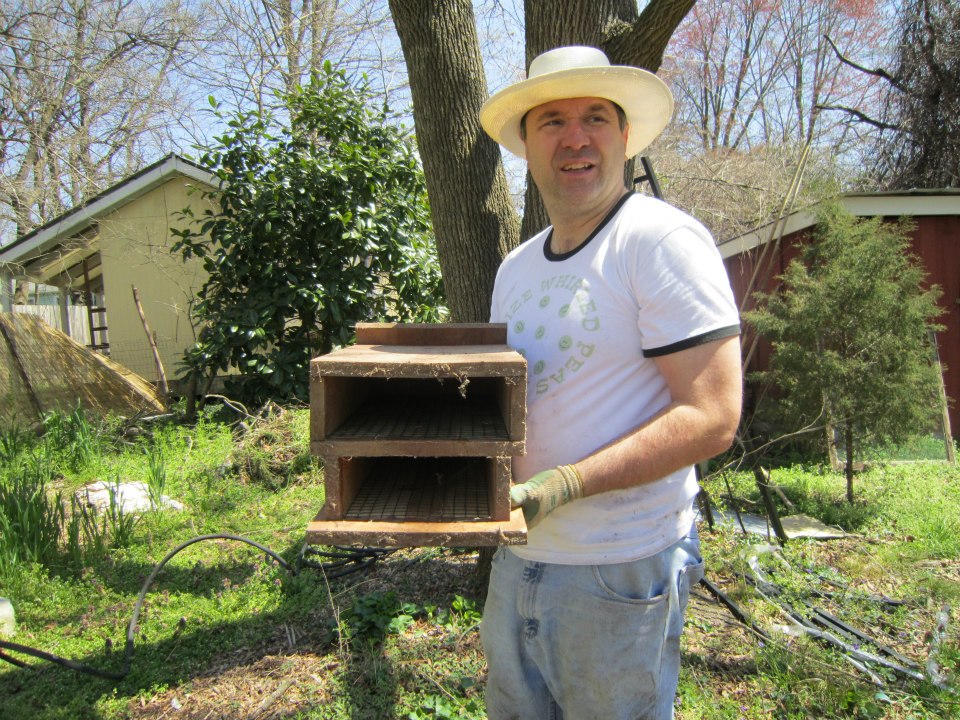 Did you know that over 5 million bats have died from a fungal disease called white-nose syndrome? This disease has decimated bat colonies everywhere, which makes creating a bat habitat that much more important.
Did you know that over 5 million bats have died from a fungal disease called white-nose syndrome? This disease has decimated bat colonies everywhere, which makes creating a bat habitat that much more important.
I’ll be the first to admit that bats freak me out a little bit, and I usually don’t have a problem with wild animals. We had to remove one a couple of years ago that came down our chimney, and I still remember those sharp little teeth, those wings that were really flaps of skin, and its dark onyx color. Creepy.
Bats are rabies carriers of course, but it turns out that a very low percentage of bats carry rabies. They also don’t live very long after they become infected. I’ve never heard of someone contracting it from a bat. In fact, there is a bridge in Austin, Texas that is home to almost a million bats; it is the largest urban bat colony in the U.S. and there has not been a single bat-biting incident.
Now I have to think about how I’m going to hang the bat house. I’ve been looking at some bat-house best practices which happen to be confirmed with statistical data. It turns out that a higher percentage of bats prefer their homes mounted on the sides of buildings or poles rather than a tree. They love being near water and in an area that gets adequate sunlight to warm up their homes. The bat house also needs to be around 20 feet high. I think I’m going to find some very large pieces of bamboo and mount the house on that. Currently I’m trying to find something long and thick enough. Pictures to come soon!
Duke Gardens named one of nation’s top 10
Duke Gardens have been named one of the top 10 public gardens in the United States. Check out the article on tripadvisor.com. I feel lucky to work right next door.
If you can’t get out to the gardens today, visit them virtually using their interactive map.
Foraging for onions
Nothing could be finer than foraging for food in your backyard on a glorious North Carolina spring morning. Today’s harvest was wild onions, and there were onions ‘o plenty.
Wild onions are part of the allium genus of plants which includes all types of onions, garlics, chives, and leeks. (Allium is the Latin word for garlic, by the way.) This morning’s mantra was “all alliums are edible,” which happens to be true.
I dug a whole bunch out of the ground, washed them and put them on the chopping block. They looked a lot like scallions to me and definitely had a similar taste. I chopped them up and threw them in the crockpot to give my beef stew some more flavor.
Franklin decided to get a little taste for himself.
I’d be curious to know if anyone out there knows where to find “ramps” which are a variety of wild onion that have become increasingly popular on the restaurant scene. Their stems are flatter and wider then the more conventional kind you see around here, and have a distinct garlic taste. They are also native to the Appalachians. Next time I go up to Boone I think I’ll try to find some.
By the way, Chicago got its name from Checagou, which is the Potawatomi name for wild leeks. Apparently the surrounding marshlands were saturated with rotting, wild leeks. True story.
Bon Appétit!
Outlawing sustainability
The states of Kansas and North Carolina have a lot more in common than a shared basketball legacy. They also have legislatures that are embarrassing the good people of both states. While the exploits of our own Tarheel Taliban have been making national headlines lately, the Kansas State Legislature has too. It’s hard to believe, but they have actually proposed a bill outlawing sustainability.
The bill, HB 2366, would outlaw the use of public funds for sustainability efforts. It defines sustainability as “a mode of human development in which resource use aims to meet human needs while preserving the environment so that these needs can be met not only in the present, but also for generations to come, but not to include the idea, principle or practice of conservation or conservationism.”
A recent article pointed out that this very definition of sustainability was lifted verbatim from the Brundtland Report, published by the United Nations World Commission on Environment and Development in 1987. ( I had no idea this document even existed, or that today the U.N. has it’s own Commission for Sustainable Development.)
The sponsor of the bill, Kansas Rep. Dennis Hedke (R-Wichita) last year supported a resolution condemning the U.N.’s Agenda 21 sustainability plan.
Hedke, a geophysicist and oil contractor, is chair of the State Committee on Energy and Environment. Koch Industries, which happens to be the second-largest privately-held company in the U.S., is listed as one of the top contributors to his campaign.
The blue herons of Duke Gardens
Now that the weather is warming up, I’m looking forward to seeing the blue herons who hang out in Duke Gardens. I’m assuming there are more than one of them although I’ve never seen a pair. They are fearless and let you get really close if you want to take a picture. Here’s one I snapped a couple of years ago in the Asiatic Arboretum at Duke Gardens.

These creatures have always fascinated me. A couple of years ago during one of our awful summer droughts, I saw one walking upright on its spindly legs through an almost-dry Ellerbe Creek. The heron reminded me of a dinosaur or a freaky creature from another planet.
I wanted to find out more about these birds, so I contacted my friend and ornithologist-extraordinaire Becky Browning. Becky was the bird collections manager at the NC Museum of Natural Sciences and is now living with her husband in Amsterdam. She works as a bird conservator at Naturalis Biodiversity Center there.
Becky told me that the herons nest colonially in trees, and are partially nocturnal. (No wonder I don’t see them eating the goldfish out of my pond, I thought.) Apparently they are increasing all across North Carolina, breeding in places they haven’t before, and moving to higher elevations in the Appalachians. In fact, they’ve been spotted in Watauga County at Bass Lake, over by the Cone Manor, one of our favorite places. They were one of those birds, like the osprey and the eagle, who suffered from DDT in the 60s and 70s but have since made a comeback.
They eat anything: mostly fish, of course, but also crawdads, large insects, frogs, small snakes, and if an unlucky mouse is nearby, mammals too. You hear folks with garden ponds complain about the herons who swoop in and eat their koi. That’s why I stock my pond with 10-cent goldfish!
I’m sure we’ll be seeing them again in Duke Gardens in the coming weeks. For more on herons, check out The Cornell Lab of Ornithology’s heron page.
Another great reason to live in Durham
Urban farming gets an official OK from City Government:
http://www.thedurhamnews.com/2013/03/23/215030/urban-farming-gets-official-ok.html
The elusive beavers of Penny’s Bend
I’ve been reading the excellent field guide, Exploring the Geology of the Carolinas, written by Kevin Stewart and Mary Russell-Robinson. It is a great introduction to geology for those of us who’ve never taken a geology course before. One of the other neat things about the book is that each chapter serves as a guide to a geologically-interesting place in the Carolinas, complete with maps and directions. A couple of weeks ago, I decided to visit one of these places, Penny’s Bend, which is only 5 miles down the road from our house. A word of caution: there are a lot of ticks at Penny’s Bend, so you’ll want to wear long pants and a cap if you venture out there.
Penny’s Bend has lots of exposed rocks from when the continents of what are now Africa and North America pulled apart. The volcanic rock also makes the soil at Penny’s bend alkaline. As a result, you find a lot of plant species there are similar to what you find on the prairies of the midwest. Most things aren’t in bloom right now, but some of the flower species at Penny’s Bend include: asiatic dayflower; blue wild indigo; smooth purple coneflower, hoary puccoon, and Dutchman’s breeches.
As I was hiking, close to sunset, a friendly dog started following me. I noticed he would occasionally run ahead of me to the edge of the river and bark.
After a few minutes I realized that he was barking at the beavers who live in the area. On the bank at river’s edge, I saw a mass of sticks and mud which appeared to be a beaver lodge. The gnawed-off trees around me appeared to confirm this.
I don’t know why I did this, but I yelled “go get em boy” at which point he ran down to the the lodge. A few seconds later, I saw something swimming in the river. It was way too big to be a fish. Unfortunately it was getting dark and I had to get back home.
I decided to go back early in the morning to see if I could get a glimpse of the beavers. I didn’t have any luck, but I managed to get more pictures of the beautiful rock formations, and hiked up to a nice bluff overlooking the Eno. You don’t get a lot of nice vantage points like this in the Triangle.
As for the beavers, maybe I’ll see them at one of their other Durham locations. For those of you who don’t know, one of the largest beaver ponds in eastern North Carolina is Behind the Big Lots off of North Roxborro street. It’s been turned into a preserve thanks to our friends at the Ellerbe Creek Watershed Association and the group of neighborhood activists known as the “Beaver Lodge” of Durham. They’ll be having their annual Beaver Queen Pageant on June 1st, which helps raise money for the Ellerbe Creek Watershed Association.
How permaculture saved my basement
Three years ago today, some friends invited me to hear permaculture enthusiast Toby Hemmenway speak at the Nicholas School of the Environment here at Duke. As I walked to the lecture, a gentle snow blanketed the ground. Little did I know what a positive impact this lecture would have on my life.
Permaculture, it turns out, is a garden design methodology that is modeled after natural ecosystems. It is a beautiful and simple paradigm, and requires from the gardener a little common sense, some strategic planning and a bit of upfront work. The gardener is then able to leverage the resources that nature provides for free. The end result for the gardener is a huge payoff in terms of yield versus mount of overall work in the garden. Or as Hemmenway writes in his book, Gaia’s Garden, “The idea is that you buy nature drinks, and she picks up dinner for you.”
In his talk, Hemmenway traced the development of humans from primitive foragers to modern farmers. He spoke about the rise of horticultural societies, cultures that had advanced beyond simple foraging but did not practice what we think of as modern farming. They were (and are) something in-between. Examples of these societies are numerous, such as the Hopewell culture in the U.S. or the Nuaulu in Indonesia. To outside observers visiting these communities for the first time, Hemmenway said, their landscapes often appeared wild and untamed; a closer look, however, would reveal things like sophisticated plant guilds and food forests growing everywhere.
I guess you could call these horticultural societies the first permaculture practitioners. Hemmenway spoke about how people in these groups only had to work a few hours a day on food production, which gave them more time for leisure activities. In contrast, the typical modern farmer would have to work 2-3 days to produce the same amount of food.
From that point on in the lecture, I was completely captivated. I realized that through strategic planning and common sense I could actually work less in the garden and get better results at the same time! All I had to do was adapt to the new paradigm. If there was a gardening Bible, Gaia’s Garden became my New Testament, a radical break with my gardening past.
That spring my wife and I focused on utilizing all of the natural resources available to us in our yard, a sloped urban lot about a quarter acre in size. We started with water collection. I was amazed at how quickly the 80-gallon barrel we already had filled up, so I bought some 275-gallon barrels and put them under the other available downspouts. With some help from my wonderful friends, we built a ten-by-twelve foot goldfish pond on the sloped backside of the yard. We have about 2,000 gallons of water at our disposal at any given time. We have never run out of water, even in the worst droughts of summer.
We also knew that we could take advantage of our sloped yard by catching water as it came down the hill. We did this by slowly sculpting the yard, digging small trenches and building up mounds of dirt, leaves and compost to catch water runoff. (Hemmenway describes these water-catching techniques in his book.) The overflow area in front of our pond became a bog where we’ve planted things like insect-eating pitcher plants and scouring rush, which attracts insect-eating dragonflies.
With so much water available to us, we began thinking about turning our yard into a giant edible landscape. We started with blueberries, and have since added strawberries and elderberries, as well as fig, plum and paw-paw trees. We also plant vegetables, of course. This year we’ve created a new vegetable bed that will be fed by water runoff.
Adhering to the principles Hemmenway outlines in his book, I also became obsessed with making our yard a “closed system” where nothing would ever be thrown away. I can’t think of a better example than the piles and piles of leaves that accumulate under our giant oak tree each fall. In the old days, we would grudgingly rake up the leaves, put them in bags and let the yard waste people pick them up. Now we use all of the leaves in the yard, creating small “hills” that are part of the contoured landscape. Eventually they turn into compost, along with the scraps from our kitchen, which we can use for gardening.
Three years later, it keeps paying off. With all of the landscaping we’ve done, I don’t have to mow the yard anymore. In fact, I gave our lawnmower away. Strawberry plants have replaced much of the grass in the front yard. Our basement used to flood regularly because of all the water runoff; we haven’t seen a drop of water in the basement in ages. We’ve reduced the amount of time we have to spend watering the plants because nature is helping us out. We’re attracting more wildlife to our backyard, including frogs, interesting birds, dragonflies and butterflies. Most of all, we’re having fun and enjoying our yard more. Thanks to my friends and the Nicholas School for turning me into a permaculture enthusiast! Don’t take my word for it, see Hemmenway’s lecture from February 2010, and get his book, Gaia’s Garden.
